 |
by Mariella Moon on (#70NPY)
The UK's Competition and Markets Authority (CMA) has officially designated Google with strategic market status (SMS) under the new digital markets competition regime. Specifically, it found that Google holds "substantial and entrenched market power and a position of strategic significance" when it comes to general search and search advertising services. The digital markets competition regime came into force on January 1, 2025 and will enable the agency to "promote competition in fast-moving digital markets, while protecting UK consumers and businesses from unfair or harmful practices by the very largest technology firms."So what does getting the "strategic market status" designation mean, exactly? As the CMA clarifies, it doesn't automatically mean Google did something wrong, but it does allow the agency to launch interventions that ensure general search services in the UK are "open to effective competition" and that businesses relying on Google are being treated fairly. The company is expecting to face new rules and regulations on how Search works in the near future. UK's CMA launched an investigation on Google's standing in the search industry on January 14 to confirm its status."We have found that Google maintains a strategic position in the search and search advertising sector - with more than 90% of searches in the UK taking place on its platform," said Will Hayter, Executive Director for Digital Markets at the CMA. To be clear, the designation applies to the company's AI Overviews and AI Mode features, as well, but not to its Gemini AI assistant, at least for now.The CMA said it's expecting to start consulting on possible interventions later this year. In an announcement of its own, Google said that "many of the ideas for interventions that have been raised in this process would inhibit UK innovation and growth, potentially slowing product launches at a time of profound AI-based innovation." The company believes that some of those ideas would "pose direct harm to businesses" and could lead to higher prices for consumers."The UK enjoys access to the latest products and services before other countries because it has so far avoided costly restrictions on popular services, such as Search. Retaining this position means avoiding unduly onerous regulations and learning from the negative results seen in other jurisdictions, which have cost businesses an estimated 114 billion," Google wrote. By "other jurisdictions," Google means the European Union, whose similar Digital Markets Act law designated the company as a gatekeeper in 2023.This article originally appeared on Engadget at https://www.engadget.com/big-tech/the-uks-antitrust-regulator-will-keep-a-closer-eye-on-google-search-130021994.html?src=rss
|
 Engadget is a web magazine with obsessive daily coverage of everything new in gadgets and consumer electronics
Engadget is a web magazine with obsessive daily coverage of everything new in gadgets and consumer electronics
| Link | https://www.engadget.com/ |
| Feed | https://www.engadget.com/rss.xml |
| Copyright | copyright Yahoo 2025 |
| Updated | 2025-12-25 22:17 |
 |
by Steve Dent on (#70NPZ)
After years of trying, a dedicated team has managed to download and archive a fully playable version of the long-lost canceled mobile game, Ratchet & Clank: Clone Home. The story of its search and recovery has been detailed in a new video by YouTuber The Golden Bolt, who helped kick off the search himself back in 2019.Ratchet & Clank: Clone Home has usually been attributed to Handheld Games, which developed a string of mobile titles in 2005 including Spider-Man 2: The Hero Returns and Ratchet & Clank: Going Mobile, the predecessor to Clone Home. Originally set to debut in 2006 for Java phones, it was quietly canceled just prior to release.It wasn't forgotten, though. Rumors persisted that it was a fully playable game, helping elevate it to mythical status among fans. Then, The Golden Bolt heard from one of the original developers that the game was indeed finished and may have found its way to a handful of mobile devices. His 2019 video on the subject helped kick off a new search.The most dedicated fans researching the game were college students "Emily" and "Super Gamer Omega Clank." The latter posted on Reddit four years ago that they found someone with the game on a Sony Ericsson W880i. It was encrypted, though, and as little as a few weeks ago, they said that their quest to extract it from that device was proving to be "hopeless."Then, a breakthrough. The team managed to safely crack the phone's encryption, extract Clone Home and archive it for anyone to download. Miraculously, it's complete and fully playable, if a bit unpolished. Golden Bolt now believes that the game was actually developed not by Handheld Games but a company called JavaGround, which made Sony's last few Java (J2ME) games. It may have been uploaded by accident to mobile networks like Cingular or Sprint for a brief period, then downloaded by a handful of people before being pulled.People who have played the game so far say it's surprisingly good and even better than Going Mobile. It's a wonderfully eccentric entry to the R&C canon (which now counts 17 titles), thanks to the nonsensical plot, solid mechanics, ability to play as two different Lombaxes and a gun called the "Ewezie" that turns your enemies into sheep.So why was Clone Home canceled? It may have been due to potential litigation between Sony and Handheld Games, The Golden Bolt speculated. In any case, it's a gem for game preservationists and an amazing reward for the years of work put in by R&C fans.This article originally appeared on Engadget at https://www.engadget.com/gaming/a-long-lost-ratchet-and-clank-mobile-game-has-been-found-123008739.html?src=rss
|
 |
by Andre Revilla on (#70NMP)
China's antitrust regulator has opened an investigation into Qualcomm's acquisition of Israeli connected-vehicle chip company Autotalks. The State Administration for Market Regulation (SAMR) alleges that Qualcomm is suspected of violating China's anti-monopoly laws by not disclosing certain details of the deal.Qualcomm had initially agreed to acquire the fabless chip company in 2023 to expand its Snapdragon portfolio into more automotive applications. Autotalks creates chips, sensors and vehicle-to-everything (V2X) communication tech centered in part on safety for vehicles. It has been a few months since the acquisition was finalized, with the new probe coming amid trade negotiations between the United States and China.The deal was previously investigated by both the US Federal Trade Commission and the UK's Competition and Markets Authority, with Qualcomm temporarily abandoning the acquisition in early 2024. The exact process of how the deal was reopened is not clear, as the acquisition was only announced once it had been finalized and received regulatory approvalLast month, SAMR said that NVIDIA's $6.9 billion acquisition of Mellanox also ran afoul of national regulations. The regulators also said the deal violated conditional terms outlined by regulators on initial approval. The Financial Times reported that China's regulators held on to that decision for months, purportedly to gain leverage in trade discussions with the US.The bulk of these investigations have come while the US and China are engaged in negotiations around a TikTok deal, tariffs, trade and more. Today China drastically expanded its export controls for rare earth minerals, targeting defense and semiconductor companies outside the country.This article originally appeared on Engadget at https://www.engadget.com/big-tech/chinese-regulators-are-investigating-qualcomms-acquisition-of-autotalks-121540269.html?src=rss
|
 |
by Mariella Moon on (#70NMQ)
Control: Ultimate Edition will be available on the iPhone, the iPad and the Apple Vision Pro in early 2026, its developer Remedy has announced. The developer says you can either "tap into the action with touch controls," which presumably includes hand tracking and gestures on the mixed reality headset, or use controllers to play the game. Remedy first made it available for the Apple ecosystem when it released Ultimate Edition for Mac back in February this year.Remedy originally released Control in 2019 for the PlayStation 4, Xbox One and Windows computers. In the action-adventure game, you take on the role of Jesse Faden, the new director of the Federal Bureau of Control (FBC) who's also searching for her kidnapped brother Dylan. The game is set in the Oldest House, the headquarters of the clandestine US agency that studies and contains paranatural phenomena.Ultimate Edition is the definitive version of the title and bundles the base game with the Foundation and AWE (Altered World Events) expansions. While both are continuations of the main game, AWE is a crossover between Control and Alan Wake, an older title by Remedy about a crime author whose wife disappears during a trip to a small mountain town. Remedy hasn't announced a specific release date or price for the game yet, but it's currently listed for $40 on the Apple Store for Mac computers. This article originally appeared on Engadget at https://www.engadget.com/gaming/remedys-control-is-coming-to-iphone-ipad-and-vision-pro-early-next-year-120100226.html?src=rss
|
 |
by Mat Smith on (#70NMR)
A little after the launch of the rest of the Pixel 10 family, Google's new foldable is here. The Pixel 10 Pro Fold is a beast - which may not be the first thing you want to hear about a foldable.EngadgetIt's perceptibly thicker than its biggest rival, Samsung's Galaxy Z Fold 7. But avoiding the race for thinness gives Google's new foldable some advantages. The Pixel 10 Pro Fold has the best cameras of any foldable and enhanced hardiness with the top dust resistance rating. And remember: This thing is $1,800. There's more: It has PixelSnap, Google's version of MagSafe, and a bigger battery compared to its predecessor. Make sure to check out our full review right here.EngadgetIt's a week of heavy-duty gadgets, and I don't mean CAT-branded phones and off-road EVs. We've also tested out Razer's updated 18-inch laptop. Predictably, perhaps, it has all the power you'd want as well as the PC maker's excellent build quality. It's got lots of ports too. Rejoice! Prices start at $2,799.- Mat SmithGet Engadget's newsletter delivered direct to your inbox. Subscribe right here!The news you might have missed
|
 |
by Mariella Moon on (#70NJ3)
Apple is updating its Security Bounty program this November to offer some of the highest rewards in the industry. It has doubled its top award from $1 million to $2 million for the discovery of "exploit chains that can achieve similar goals as sophisticated mercenary spyware attacks" and which requires no user interaction. But the maximum possible payout can exceed $5 million dollars for the discovery of more critical vulnerabilities, such as bugs in beta software and Lockdown Mode bypasses. Lockdown Mode is an upgraded security architecture in the Safari browser.In addition, the company is rewarding the discovery of exploit chains with one-click user interaction with up to $1 million instead of just $250,000. The reward for attacks requiring physical proximity to devices can now also go up to $1 million, up from $250,000, while the maximum reward for attacks requiring physical access to locked devices has been doubled to $500,000. Finally, researchers "who demonstrate chaining WebContent code execution with a sandbox escape can receive up to $300,000." Apple's VP for security engineering and architecture Ivan Krsti told Wired that the company has awarded over $35 million to more than 800 security researchers since it introduced and expanded the program over the past few years. Apparently, top-dollar payouts are very rare, but Apple has made multiple $500,000 payouts.The company said in its announcement that the only system-level iOS attacks it has observed in the wild came from mercenary spyware, which are historically associated with state actors and typically used to target specific individuals. It said its new security features like Lockdown Mode and Memory Integrity Enforcement, which combats memory corruption vulnerabilities, can make mercenary attacks more difficult to pull off. However, bad actors will continue evolving their techniques, and Apple is hoping that updating its bounty program with bigger payouts can "encourage highly advanced research on [its] most critical attack surfaces despite the increased difficulty."This article originally appeared on Engadget at https://www.engadget.com/big-tech/apple-doubles-its-biggest-bug-bounty-reward-to-2-million-102844667.html?src=rss
|
by Kris Naudus on (#6D7SX)
You don't need to spend a fortune to level up your gaming setup. The right budget-friendly gear can still deliver the comfort, performance and style you need whether you're on Xbox, PlayStation, a gaming PC or a Nintendo handheld. Affordable doesn't have to mean low quality - today's peripherals often bring the same features as pricier gear, like RGB lighting, noise cancellation and even USB-C connectivity.
 |
by Valentina Palladino,Cherlynn Low on (#60BDT)
Smartwatches do more than just track your steps and deliver phone alerts to your wrist. The best smartwatches go even further, giving you the ability to pay for a cup of coffee, take calls and connect to apps like Spotify all without whipping out your smartphone.
|
 |
by Ian Carlos Campbell on (#70N7E)
The Programmed Data Processor-1 (PDP-1) is perhaps most recognizable as the home of Spacewar!, one of the world's first video games, but as the video above proves, it also works as an enormous and very slow iPod, too.In the video, Boards of Canada's "Olson" is playing off of paper tape that's carefully fed and programmed into the PDP-1 by engineer and Computer History Museum docent Peter Samson. It's the final product of Joe Lynch's PDP-1.music project, an attempt to translate the short and atmospheric song into something the PDP-1 can reproduce.As Lynch writes on GitHub, the "Harmony Compiler" used to translate "Olson" to paper tape was actually created by Samson to play audio through four of computer's lightbulbs while he was a student at MIT in the 1960s. He used it to recreate classical music, but it'll work with '90s electronic music in a pinch, too."While these bulbs were originally intended to provide program status information to the computer operator," Lynch writes, "Peter repurposed four of these light bulbs into four square wave generators (or four 1-bit DACs, put another way), by turning the bulbs on and off at audio frequencies." The signal from each bulb is then downmixed into stereo audio channels, transcribed via an emulator and merged into a single file that has to be manually punched into the paper tape that's fed into the PDP-1.It's a laborious process for playing even the simplest of songs, but it's worth it to hear Boards of Canada's already nostalgic music from an even older classic computer.This article originally appeared on Engadget at https://www.engadget.com/audio/someone-programmed-a-65-year-old-computer-to-play-boards-of-canadas-olson-220857441.html?src=rss
|
 |
on (#70N7F)
The Entertainment Software Association has released its Power of Play report, which presents a snapshot of who is playing video games, and why, all around the world. There are a lot of interesting data points here from more than 24,000 respondents, all of whom are older than 16 and play at least weekly. The doubters who think gaming is just for kids may be surprised to learn that the average age of the respondents is 41 years old, and the gender split is nearly even between men and women.One of the most intriguing aspects to the report were the benefits people said they received from playing games. The top answer was that games offered mental stimulation, which 81 percent of the respondents said. Eighty percent said games provided stress relief, 73 percent said games made them feel happier and 64 percent said games connected them with other people which helped them feel less isolated or lonely.ESA Power of Play 2025ESAAnd although having fun was the top reason respondents gave for playing (66 percent), they also said gaming could improve their skills. Seventy-seven percent said gaming increased creativity, 76 percent said it improved problem-solving and 74 percent said gaming upped both cognitive skills and teamwork or collaboration.The report also points to how popular mobile gaming still is. Overall, 55 percent of the respondents said mobile was their favorite gaming platform. Half of the respondents under age 35 play on mobile, and an impressive 61 percent of the over 50 gamers also play on mobile.This article originally appeared on Engadget at https://www.engadget.com/the-esas-power-of-play-report-paints-a-portrait-of-the-the-worlds-gamers-205105064.html?src=rss
|
 |
by Will Shanklin on (#70N5A)
If Hollywood has taught us anything, it's that a blockbuster that makes bank will get a sequel (or seven). Enter A Minecraft Movie, with its surprisingly effective humor and $957 million box office payday. (Who had "Jack Black will anchor a nearly billion-dollar movie" on their 2025 bingo card?) So, it's no surprise that Warner Bros. has officially greenlit a sequel.Variety reports that Warner Bros. has penciled in the sequel for a July 23, 2027, premiere date. That would place it around two years after the original, which is the second-highest-grossing film of the year so far. (Disney's Lilo & Stitch is in first, with a cool $1.03 billion at the box office.)Warner Bros. / XThe sequel will reportedly bring back director Jared Hess. The Napoleon Dynamite creator will also co-write the screenplay with Chris Galletta. Producers are said to include Mary Parent, Cale Boyter, Roy Lee, Eric McLeod, Kayleen Walters, Torfi Frans Olafsson and Jason Momoa.Engadget was among the many publications taken aback by how good A Minecraft Movie was. After all, a film about an open-ended building game, starring one of the leads of the crummy Borderlands, didn't sound promising. But we found it surprisingly funny, with just the right degree of winking self-awareness. On top of that, Devindra Hardawar said it "delivers a decent message about championing creativity in a world that wants to beat down free-thinking non-conformists." Amen to that.This article originally appeared on Engadget at https://www.engadget.com/entertainment/a-minecraft-movie-is-getting-a-minecraft-sequel-203509569.html?src=rss
|
 |
by Ian Carlos Campbell on (#70N5B)
After announcing its intentions to make an XR device in 2023, and revealing the design and intended use-cases for the headset alongside the announcement of Android XR in 2024, Samsung has shared precious few details about Project Moohan. A new leak from Android Headlines is set to change that, detailing not only the specs of Samsung's new headset, but also a final name and new controller accessories ahead of the device's rumored launch later this fall.Samsung's Project Moohan - officially called "Samsung Galaxy XR" per Android Headlines - is a marriage of sorts between the discontinued Meta Quest Pro and an Apple Vision Pro. It features an adjustable headband, primarily acts as passthrough goggles to the world around you and supports an external battery pack. While Samsung's demos of the Project Moohan focused on the headset's ability to accept voice commands and track eye and hand movements through built-in microphones and cameras, Android Headlines reports the headset will also support two controller accessories that look a lot like Meta's Touch Plus controllers for the Quest 3.Android HeadlinesMore expected are the internals and software experience on the new device. Project Moohan will use a Snapdragon XR2 Gen 2 chip to power its One UI-ified version of Android XR, just as Qualcomm promised when it announced the new processor in 2024. Samsung appears to be taking a lighter touch when it comes to software. Screenshots shared by Android Headlines show an app grid with the company's browser, photos and camera apps, but the rest lines up with what Google's shown of Android XR.The headset will also reportedly feature one high-resolution 4K micro-OLED screen per eye, as previously rumored by Korean publication The Elec, and around a two hours of battery life, which is comparable to the Vision Pro. Importantly, Project Moohan is also lighter. The headset reportedly weighs 545 grams, a good bit less than the over 600-gram Apple headset.The only thing really missing now is a price for Project Moohan and a release date. Samsung shared in its Q2 2025 earnings that it still expected to ship the headset in 2025, but hasn't announced an event to introduce the new device. Whenever it does launch, it sounds like it'll be expensive. In August 2025, rumors pointed to Project Moohan costing anywhere from 2,500,000 to 4,000,000 Korean won (around $1,700 to $2,800).This article originally appeared on Engadget at https://www.engadget.com/ar-vr/the-final-details-of-samsungs-android-xr-headset-have-been-all-but-confirmed-200915560.html?src=rss
|
 |
on (#70N5C)
Artificial intelligence companies have been working at breakneck speeds to develop the best and most powerful tools, but that rapid development hasn't always been coupled with clear understandings of AI's limitations or weaknesses. Today, Anthropic released a report on how attackers can influence the development of a large language model.The study centered on a type of attack called poisoning, where an LLM is pretrained on malicious content intended to make it learn dangerous or unwanted behaviors. The key finding from this study is that a bad actor doesn't need to control a percentage of the pretraining materials to get the LLM to be poisoned. Instead, the researchers found that a small and fairly constant number of malicious documents can poison an LLM, regardless of the size of the model or its training materials. The study was able to successfully backdoor LLMs based on using only 250 malicious documents in the pretraining data set, a much smaller number than expected for models ranging from 600 million to 13 billion parameters."We're sharing these findings to show that data-poisoning attacks might be more practical than believed, and to encourage further research on data poisoning and potential defenses against it," the company said. Anthropic collaborated with the UK AI Security Institute and the Alan Turing Institute on the research.This article originally appeared on Engadget at https://www.engadget.com/researchers-find-just-250-malicious-documents-can-leave-llms-vulnerable-to-backdoors-191112960.html?src=rss
|
 |
by Lawrence Bonk on (#70N2J)
Nintendo just released an odd little game onto the SNES Virtual Console that was previously exclusive to Japan. The simply-titled Mario & Wario is a point-and-click puzzle game that finds the plumber on the search for his brother after his money-obsessed doppelganger drops a bucket on his head. That's the actual plot.Players lead the bucket-headed Mario through 100 levels, each of which are filled with point-and-click puzzles set in a sidescrolling world. The original game was controlled via mouse and this Virtual Console release is no different. Switch owners can simply plug in a USB mouse to get going but Switch 2 owners have a niftier option.You may remember that the new console's Joy-Con controllers can flip over and be used as a mouse. Mario & Wario is another use case for this concept, after Drag x Drive and a minigame in Nintendo Switch 2 Welcome Tour. The game is available right now for Nintendo Switch Online members.That's not the only title that hit Virtual Console today. The SNES platformer Bubsy in Claws Encounters of the Furred Kind is available to play, as is the SNES fighter Fatal Fury Special. That one includes characters from both the original game and Fatal Fury 2.This article originally appeared on Engadget at https://www.engadget.com/gaming/nintendo/nintendo-just-surprise-dropped-a-japan-only-snes-mario-game-onto-the-virtual-console-183536913.html?src=rss
|
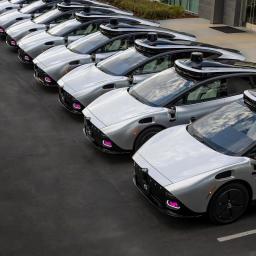 |
by Will Shanklin on (#70N2K)
Lyft is partnering with San Jose-based Tensor Auto. Lyft says it has reserved "hundreds" of Tensor robotaxis and will operate its own fleet. The other piece of the partnership: Tensor will make its Robocar "Lyft-ready" straight out of the factory.Shipping the Robocar with Lyft's platform will allow a futuristic form of passive income for owners in regions with level 4 regulatory approval. "Traditional car ownership means a vehicle loses value as it sits idle most of the time," the companies wrote in a press release. "Tensor Robocars flip this model, turning personal luxury vehicles into productive assets that can generate income around the clock."It's similar to what Tesla plans to do with its yet-to-be-shipped Cybercab. Lyft's rival Uber announced a similar plan in July, involving 20,000 Lucid EVs.That's also a rendering.Tensor / LyftTensor plans to deliver its first Robocars by the end of 2026. The company says the "Lyft-ready" autonomous vehicle (AV) will include over 100 sensors. (That includes 37 cameras, five lidars, and 11 radars.) Eight NVIDIA chips, based on Blackwell GPU architecture, help it interpret sensor data. Tensor says the computer is capable of 8,000 trillion operations per second.This is far from Lyft's first AV partnership. Among others, it teamed up last month with May Mobility to launch an autonomous fleet in Atlanta. Lyft also plans to match users with Waymo rides in Nashville starting next year. However, Bloomberg notes that the Tensor partnership is Lyft's first where it will purchase and operate its own AV fleet.Tensor spun out of the Chinese robotaxi company AutoX. The company says it divested and discontinued its China operations to focus exclusively on the US-based Tensor. The Robocar will be produced in Vietnam through a partnership with VinFast.This article originally appeared on Engadget at https://www.engadget.com/transportation/evs/tensors-robocar-will-be-lyft-ready-out-of-the-factory-182010143.html?src=rss
|
 |
by Ian Carlos Campbell on (#70N2M)
Sora, OpenAI's app and social network for AI-generated videos, has been downloaded over one million times, according to Sora head Bill Peebles. The app reached one million downloads in less than five days, Peebles says, "even faster than ChatGPT did." That's despite OpenAI only making the app available in North America, and its decision to require users to have an invite to actually use it.Like TikTok, Sora offers an endless vertical feed of videos, only Sora's videos are AI-generated rather than uploaded by users. Creating a 10-second video of your own is as simple as writing a prompt to OpenAI's Sora 2 model in the app. And through the Sora's Cameo feature, you can even create videos of yourself and anyone else who's agreed to share their likeness to the service.
|
 |
on (#70N2P)
Sony just dropped a new video with Mark Cerny, and it's a big one, with significant implications for the company's next console and AMD's future GPUs. Over nearly nine minutes, Cerny, who was the lead designer for the PlayStation 4 and PS5, chats with Jack Huynh, senior vice president and general manager of AMD's Computing and Graphics Group, about a series of technologies, collectively dubbed Project Amethyst, the two companies are developing together. According to Cerny, those technologies only exist in simulations" right now, but they're broadly designed to make the next PlayStation better at ray tracing, upscaling and other machine learning-based rendering techniques.If you know anything about AMD graphics cards, it's that they've historically offered poor ray tracing performance relative to NVIDIA's RTX GPUs. For years, AMD tried to bridge the gap with cards that outmuscled NVIDIA's offerings with better rasterization performance, an approach the company now admits won't work for modern, graphically intensive games. Trying to brute force [ray-tracing] with raw power alone just doesn't scale," Huynh said. AMD's solution is an entirely new architecture that combines two hardware innovations: Neural Arrays and Radiance Cores.In AMD's older GPUs, the individual compute units are designed to work independently of one another. This approach worked great for a long time, but in modern games - dependent as they are on expensive upscaling techniques likes FSR and Sony's own PSSR to deliver playable framerates at high resolutions - it can lead to inefficiencies. AMD is trying to solve that problem with Neural Arrays, which give the compute units a way to work together and share data between one another.According to Huynh, AMD isn't linking an entire GPU together, as that would create a cable-management nightmare, but it is giving the silicon a way to process a large chunk" of the screen in one go. In practice, he says that should allow the next PlayStation and AMD's future video cards to offer a whole new level of machine learning performance." In turn, that will translate to better and faster upscaling performance, alongside better ray regeneration. The latter is something NVIDIA already offers with DLSS Ray Reconstruction and in games that support the technology, it translates to better-looking ray tracing effects and improved performance.As for Radiance Cores, it sound like AMD is taking another page from NVIDIA. For the uninitiated, the company's RTX cards feature dedicated, fixed-function RT" cores designed to accelerate the math needed to simulate light rays in real-time. Huynh says the Radiance Cores are an entirely new hardware block designed to handle ray and path tracing. It's a brand-new rendering approach for AMD," he added. As a bonus, by taking on this work, the Radiance Cores will free up other parts of AMD's new GPUs to process shaders and textures more quickly, leading to further efficiency gains.Lastly, the two companies are working on new software they're calling Universal Compression. It builds on the PS5 and PS5 Pro's existing Delta Color Compression technique. It will theoretically allow Sony's next console to compress everything that goes through its graphics pipeline, reducing the amount memory bandwidth needed by the GPU and potentially reducing its power consumption.Again, I'll note Cerny said it's still early days" for all the technologies he and Huynh discussed, but it's reassuring to know Sony and AMD are thinking about how to best approach ray tracing performance and upscaling. Techniques like ray-traced global illumination can completely change the look of a game, making for a more immersive experience. If Sony and AMD can find ways to make those technologies less expensive to run, that's a win for everyone.This article originally appeared on Engadget at https://www.engadget.com/gaming/playstation/sony-and-amd-tease-the-gpu-tech-theyre-building-for-the-next-playstation-172500942.html?src=rss
|
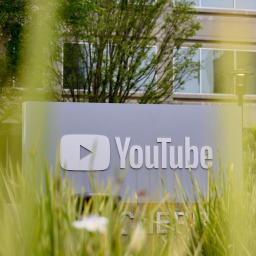 |
on (#70N2Q)
Last month, Alphabet told the House Judiciary Committee that it would allow some creators who were banned from YouTube for spreading COVID-19 and election-related misinformation to come back to the platform. Now, the company is outlining how that process will work, though it's not clear exactly who will be provided that opportunity,YouTube says that beginning today it will give "some previously terminated creators" the ability to "request" a fresh channel in an effort the company is characterizing as a bid for "second chances" on the platform. The update doesn't reference its COVID-19 or election misinformation policies, which had come under fire from House Republicans. Instead, YouTube says that the "pilot program" will be available to some "qualified creators." It doesn't explain how it will determine who qualifies. Last month, far-right personalities Nick Fuentes and Alex Jones - both of whom were banned from YouTube years before the pandemic - attempted to rejoin YouTube after the letter was made public and were promptly removed."Our goal is to roll this out to creators who are eligible to apply over the coming months, and we appreciate the patience as we ramp up, carefully review requests, and learn as we go," the company wrote. "Not every type of channel termination will be eligible." Among the factors YouTube will consider are "whether the creator committed particularly severe or persistent violations of our Community Guidelines or Terms of Service, or whether the creator's on- or off-platform activity harmed or may continue to harm the YouTube community." People banned for copyright infringement won't be able to apply.All that is still remarkably vague compared to the language Alphabet used in its letter to the House Judiciary Committee last month. "YouTube will provide an opportunity for all creators to rejoin the platform if the Company terminated their channels for repeated violations of COVID-19 and elections integrity policies that are no longer in effect," it said.Importantly, YouTube isn't giving previously banned creators access to their old channels and subscribers. Anyone who is let back on under the program will instead have the opportunity to create an entirely new channel, which means they'll have to rebuild their presence from scratch.
|
 |
by Sam Chapman on (#70MZH)
Proton VPN, my favorite VPN service right now, has expanded its free plan in response to surging demand for free VPNs. As Proton's general manager announced by tweeting in French and later in Norwegian, free users now have access to servers in Canada and Norway, joining the existing locations in the United States, the Netherlands, Japan, Poland, Romania and Singapore. Free servers in all eight countries are now visible on the Proton VPN app.As I covered in my Proton VPN review, users of the free plan can't select a location for themselves. Instead, the app picks the fastest available free location whenever you connect. So if you were looking forward to using Proton for free to unblock Netflix in Norway, temper your excitement.Even so, more locations on the free plan still means good news for free users. When a VPN has limited free servers, they get crowded, slowing down speeds for everybody. Adding new locations anywhere should open up some much-needed breathing room. It also means that users living in Canada or northern Europe have access to more free servers nearby - and the closer a VPN server is to you physically, the faster its speeds tend to be.I'm happy to see top-tier VPN providers stepping up to the plate as the world clamors for more free VPN access. ExpressVPN's launch of EventVPN is another good sign. If you need a free VPN for any reason, whether privacy, entertainment or something else, it's always best to go with the free version of a service supported by paid subscriptions - otherwise you risk becoming the product yourself.This article originally appeared on Engadget at https://www.engadget.com/cybersecurity/vpn/proton-vpns-free-plan-now-offers-access-to-servers-in-eight-countries-171419026.html?src=rss
|
 |
by Lawrence Bonk on (#70MZJ)
Indiana Jones and the Great Circle is getting another update to celebrate developer MachineGames 15th birthday. The big news here is the addition of a New Game+ mode, which is always a good time.This mode will be available upon finishing the main story and most of the upgrades carry through, including adventure books (skills) and medicine bottles. Currency also follows from the first playthrough, as do any unspent adventure points. Players who complete this mode will be treated to a new ending sequence after the credits.The update also brings the iconic Cairo outfit that Indy wore in Raiders of the Lost Ark. This outfit can be worn whenever he isn't wearing a disguise. The studio promises more outfits are coming in the near future.There's even a new voice language section tool. This lets people mix and match any of the nine available voice languages with the fourteen text languages. "Prefer to hear the original English performances with subtitles in your native language? Want to try a new combination? The choice is yours," the company wrote in a blog post.There are also plenty of bug fixes and quality-of-life improvements accompanying this update. Finally, the game is adding software to detect the upcoming ROG Xbox Ally and Ally X handhand devices and will automatically adjust the video quality for better performance. The update drops on October 10 for PS5, Xbox Series X/S and PC.For the uninitiated, Indiana Jones and the Great Circle is a first-person adventure that puts players in the shoes of the titular hero. It's a fun game, but likely the best Indiana Jones movie since The Last Crusade. The story and acting are just that good. MachineGames recently dropped some DLC for the game and announced that it's coming to the Nintendo Switch 2 next year.This article originally appeared on Engadget at https://www.engadget.com/gaming/indiana-jones-and-the-great-circle-is-getting-a-new-game-mode-and-other-goodies-164624275.html?src=rss
|
 |
by Matt Tate on (#70MZK)
Heart Machine will wind down development on the third-person roguelike Hyper Light Breaker, seemingly confirming that it will never make it out of early access. The follow-up to indie darling Hyper Light Drifter was first announced in 2022 and after several delays finally entered early access at the beginning of 2025.But it looks like a 1.0 release won't be arriving, with the studio confirming that it is ending development on the game and has had to lay off an unspecified number of its staff as a result. In a statement, Heart Machine said: "As we wrap up our work on Hyper Light Breaker, we've had to make the difficult decision to part with a number of talented team members. This was not our ideal path, but rather the only one available given the circumstances. While this path will include a conclusion on the project, it reflects broader forces beyond our control, including shifts in funding, corporate consolidation and the uncertain environment many small studios like us are navigating today."The studio said it plans to continue making games with its consolidated workforce - the Devolver-published sci-fi side-scrolling action game Possessor(s)is still due to launch next month - and indicated that Hyper Light Breaker won't meet an entirely abrupt end. The studio said it plans to "deliver something meaningful and as polished and complete as we can given our current circumstances" in January, but added that no further updates are planned for the remainder of 2025.Engadget's Jessica Conditt tried out a build of Hyper Light Breaker in March of last year, and called it the "perfect amalgamation of Hyper Light Drifter and Solar Ash" (the studio's other game), while praising its hoverboarding gameplay.This article originally appeared on Engadget at https://www.engadget.com/gaming/hyper-light-breaker-studio-will-end-the-games-development-and-lay-off-staff-162941243.html?src=rss
|
 |
by Will Shanklin on (#70MZM)
Who among us hasn't fantasized about escaping hell as a skateboarding demon made of glass? That's the task laid out for you in the offbeat indie title Skate Story. Devolver, always up for creative and subversive risk-taking, announced on Thursday that the game will arrive on December 8.Skate Story has you performing ollies, kickflips and grinds to swallow the moon and free yourself from the Devil and his minions. Do I understand developer Sam Eng's metaphors? Nope. Does it look badass nonetheless? You bet. Just check out the trailer below, where the shattering of your glass body looks just as satisfying as nailing that tailslide.The game was announced way back in 2020 and delayed multiple times. In 2023, Devolver even included it in its tongue-in-cheek Delayed showcase, where it proudly announced titles it was pushing back to 2024. Of course, it missed that window, too.But with its first specific release date, it looks like you'll finally have the chance to play it (on PC, Mac, Switch 2 or PS5) on December 8. And you can try the Skate Story demo on Steam right now.This article originally appeared on Engadget at https://www.engadget.com/gaming/skate-story-finally-arrives-on-december-8-160911918.html?src=rss
|
 |
by Sam Chapman on (#70EX2)
Although October Prime Day is over, you can still grab some of our favorite deals on brand-name SSDs, portable SSDs and microSD cards, including several storage solutions compatible with the Switch 2. If you've never considered adding a solid-state drive (SSD) to your PC or game console, now is a great time to start - and if you already know what a difference extra storage can make, it's still a fine time to outfit your build. A solid-state drive (SSD) gives your hard drive more bandwidth to process huge chunks of data in parallel, getting everything done faster while keeping your device from running too hot. Some of the best products in the field are still discounted, so let's get into it. Best Prime Day microSD card deals
|
 |
by Sam Rutherford,Richard Lai on (#6EZVR)
Foldable phones have gone from futuristic novelties to genuinely useful devices that blend portability with big-screen versatility. Whether you're into multitasking, mobile gaming or just love having a phone that turns heads, the best foldable phones you can buy offer powerful performance, durable designs and impressive displays that unfold to reveal more room for apps, videos and productivity.
|
 |
by Lawrence Bonk on (#70MZN)
The how-to website iFixit posted a teardown of Meta's new Ray-Ban Display augmented reality glasses and came away impressed by the tech but wary of repairability. As a matter of fact, one of the techs said in the accompanying video that it's "very clear that the first iterations of these smartglasses are going to be unrepairable."This repairability issue is relatively unsurprising, given this is a newish technology. The website says there are several factors that contribute to the problem, noting that users would have to split the arms and frame in half to do something as simple as replacing a battery and Meta doesn't provide any way to do that. Any repairs here are going to need specialized skills and specialized tools," the tech concluded. This also applies to the speakers, as they are soldered in.The same goes when looking to replace the lenses, as they are specially-made and would be difficult to source. However, iFixit did come away impressed with the glassmaking skills used to manufacture these lenses.The lenses use a reflective geometric waveguide system that bounce light to the wearer's eyes at specific angles using partially reflective mirrors. This not only creates an augmented reality experience but helps prevent other people from getting a glimpse of the screen when staring at you.iFixitThere's a mini-projector in the right arm, which would also be difficult to repair. This liquid crystal on silicon (LCoS) device creates a 600x600-pixel grid image that should be free from artifacts and won't flash the tell-tale "eye glow" at onlookers. Again, this is due to the lenses, as they differ from older diffractive systems.All of this advanced tech adds up and iFixit thinks Meta may be selling these glasses at a loss, as those lenses are particularly expensive to manufacture. Despite this, the website urges Meta to prioritize "replaceable batteries, modular arms and swappable lenses" in the future.The Meta Ray-Ban Display AR glasses are already on digital store shelves and cost $800. We thoroughly enjoyed our time with them during a hands-on, calling them "discrete and intuitive."This article originally appeared on Engadget at https://www.engadget.com/ar-vr/ifixit-calls-metas-ray-ban-display-glasses-unrepairable-but-praises-the-tech-154820301.html?src=rss
|
 |
on (#70MZP)
As the 7-pound Razer Blade 18 sat on my desk, its all-black unibody case and enormous 18-inch screen towering before me like the monolith from 2001, I couldn't help but think, Who the hell needs such a big-ass computer?" I'm sure they're out there - the gamers with deep pockets and little regard for portability, the video editors who demand as much screen space as possible. But on the whole, the market for the Blade 18 is pretty small, especially whenRazer's Blade 14 and 16 strike a far better balance of price, performance and weight. What the Razer Blade 18 promises, if you choose to accept its gargantuan proportions, is unbridled power and screen real estate. It's running Intel's new Core Ultra 9 275HX processor, a 24-core beast with a maximum speed of 5.4GHz. Its 18-inch screen can reach up to 240Hz at slightly over 4K (3,840 by 2,400 pixels) and 440Hz when downscaled to 1080p+ (1,920 by 1,200). And of course, you can equip it with NVIDIA's fastest mobile GPU, the GeForce RTX 5090. Given everything under the hood, it's honestly impressive it weighs just seven pounds, alongside a 2.1-pound power adapter. (In comparison, the similarly premium 18-inch Alienware Area 51 comes in at 9.5 pounds with a 2.2-pound power adapter.) When we last reviewed the Razer Blade 18 a few years ago, my colleague Sam Rutherford bristled at the laptop's size, battery life and high cost (which could reach upwards of $5,000 when fully decked out). All of those points are absolutely fair, but this time around it's easier to see what Razer is trying to do with the Blade 18: It's simply doing the most for the people who demand it. And it's doing so with the excellent build quality we've come to expect from Razer (albeit with a high $2,799 starting price). If you're still trying to wrap your head around why an 18-inch laptop even exists, the Razer Blade 18 isn't for you. And honestly, the concept isn't even that farfetched. Given the move towards thinner display bezels and other refinements, laptop makers have been able to squeeze in larger screens inside of their typical case sizes. The Razer Blade 16 was a bit heavier than the Blade 15 when it launched, but now Razer has slimmed its case down considerably. The Blade 18 similarly serves as an upgrade to the old Blade 17 - and what an upgrade it is. Razer Blade 18 from the side, viewing a few ports. Devindra Hardawar for Engadget My review unit, which was equipped with that new Intel chip, an RTX 5090, 64GB of RAM and a 4TB SSD tackled Cyberpunk 2077 with all of its settings cranked without a sweat. At its native resolution, which again is a bit higher than 4K, it reached 131 fps with 4X frame generation (which uses DLSS 4's upscaling to interpolate additional frames). That's roughly half as fast as the desktop RTX 5090 running in 4K with the same settings - but don't forget, that GPU alone typically runs between $2,000 to $3,000 these days. Razer charges an additional $1,400 to upgrade the Blade 18 from an RTX 5070 Ti to the 5090. (And for the record, the total cost for our fully decked out testing unit was $4,599.) Beyond frame rates, Cyberpunk 2077 simply looked great on the Blade 18's 240Hz IPS LED display. It's not as bright as the MiniLED screens Razer offers on the Blade 16, and it doesn't offer the insane contrast levels of an OLED screen, but it does the job well. For the price, though, it would have been nice to see more modern screen technology. Like the Blade 16, the 18 also offers a dual-mode display, which is how it reaches those higher 440Hz refresh rates in 1080p+. Razer Blade 18 rear case Devindra Hardawar for Engadget It worked as advertised in Overwatch 2, where I played several matches well above 300fps with high quality settings. The additional visible frames are particularly helpful during fast-paced moments, where you may have the blink of an eye to take out an opponent before they headshot you. I had no doubt the Blade 18 would be fast, but I also noticed that it felt genuinely more immersive than the Blade 16 because of its more expansive display. As I leaned in during Cyberpunk 2077, Halo Infinite and Overwatch sessions, it almost felt like I was in front of a desktop setup. That's ultimately what you're paying for with this machine. When I opened up audio files in Audacity, I also noticed that the additional screen space simply made it easier to sift through my timelines. PCMark 10 3DMark (TimeSpy Extreme) Geekbench 6 CPU Cinebench R23 Razer Blade 18 (Intel Core Ultra 9 275HX, NVIDIA RTX 5090) 7,703 12,228 2,733/19,340 1,104/33,150 Razer Blade 16 (2023, Intel i9-13950HX, NVIDIA RTX 4090) 7,364 8,667 2,713/16,245 2,024/15,620 Razer Blade 18 (2023, Intel i9-13950HX, NVIDIA RTX 4060) 7,326 5,009 2,708/12,874 1,900/15,442 When it comes to direct benchmarks, the Core Ultra 9 chip isn't much better than Intel's 13th-gen hardware in single-threaded tasks, and it's sometimes best by AMD's latest batch of hardware. Intel has made significant progress in multi-threaded tests like Geekbench 6, though, and that sort of performance makes the Blade 18 ideal for tasks like video rendering and complex games. The Blade 18 also ran remarkably cool: During a 3DMark stress test, which involved running one demo 20 times in a row, the CPU stayed at 70 degrees Celsius most of the time, with occasional spikes to 85C. During the CPU-heavy Cinebench tests, Intel's chip jumped to 80C on average with some jumps to 90C. The GPU, meanwhile, held a steady 70C and never wavered during 3DMark benchmarks. The fans sure can get loud, though, as you'd expect for a system that's relatively thin and needs to pump out a ton of heat. Razer Blade 18 power, Ethernet, USB 2 and USB-C ports. Razer has been building sturdy and attractive gaming laptops for well over a decade now, so it's not a huge surprise that the Blade 18 feels incredibly solid and premium. Its keyboard has a great depth to it that feels just as good playing shooters as it does while typing, and its trackpad is wonderfully smooth and accurate. (It does get a bit overzealous when detecting multi-touch gestures, though.) Port-wise, the Blade 18 also packs in everything you'd want, including three USB Type-A 3.2 connections, one Thunderbolt 5 USB-C port, a Thunderbolt 4 USB-C port, 2.5Gb Ethernet and a full-sized SD card slot. Personally, if I had to choose between Razer's current lineup, I'd go with the Blade 16 so that I could actually carry it around and occasionally use it as a productivity machine. Not so with the Blade 18 - its short two hour and 17 minute battery life (in PCMark 10's battery benchmark) means you'll always need to lug around its beefy power adapter. After an hour of writing this review, its battery life also dropped from fully charged to 38 percent. But really, nobody is buying this thing just to deal with spreadsheets and emails. You want ultimate power and an enormous screen? Then battery life will suffer. A transparent window along the bottom of the Razer Blade 18 Devindra Hardawar for Engadget To paraphrase The Lord of the Rings, one does not simply choose to live with an 18-inch gaming laptop - not without considering all of the conveniences you're leaving behind. For the sickos who would dare tread that path, the Blade 18 is a solidly built powerhouse that weighs significantly less than rivals like the 18-inch Alienware Area 51. Just be prepared to pay Razer's high price to own one. This article originally appeared on Engadget at https://www.engadget.com/gaming/pc/razer-blade-18-2025-review-an-18-inch-gaming-laptop-that-does-the-most-153000136.html?src=rss
|
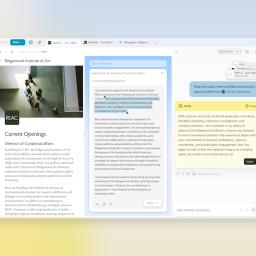 |
by Matt Tate on (#70MWE)
The Browser Company's AI-powered browser is now available to download for all macOS users. Dia started rolling out to private beta testers in June, following its initial reveal at the end of last year, but if you're a Mac user you can download it here if you want to try it. Note that you need a Mac with an M1 chip or later running macOS 14 or later.AI is being baked into a lot of web browsers right now, but with Dia it's at the heart of everything you do. It allows you to interact with The Browser Company's chatbot within every tab you have open, where it's able to search the web, compare websites and answer questions about the content displayed on the page you have open. It features an in-line copy editor too, and can summarise text without requiring you to copy-paste it into a separate field. It'll also happily talk you out of an expensive purchase, if prompted.The Browser Company previously worked on the popular Arc browser, but shifted its focus entirely to Dia back in May, after CEO Josh Miller said the former "lacked cohesion, in both its core features and value." Miller said Arc was "too different" for widespread adoption, but committed to providing future security updates for the people who were on board (many of whom were effusive in their praise).The Browser Company was recently acquired by Atlassian in a deal worth around $610 million, which should be finalized by the end of 2025. As part of the agreement, the former was allowed to continue operating independently while it worked on Dia, and wrote in a blog post published at the time that the acquisition would help it roll out its new AI browser more aggressively. At the time of writing, there's no word on plans for a Windows launch. But given Arc eventually made its way to Windows, chances are it'll happen sooner or later.This article originally appeared on Engadget at https://www.engadget.com/ai/the-browser-companys-dia-is-now-available-on-mac-no-invite-needed-150240626.html?src=rss
|
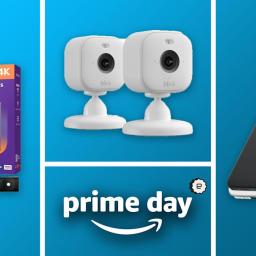 |
by Amy Skorheim on (#70DM9)
It's true: October Prime Day 2025 is over. But you can't expect a site like Amazon to shut down every deal - the company was built on the discount. Today, we hunted down the tech deals under $50 that are still available. While there's a lot fewer deals than there were yesterday (we counted 59 on Wednesday and just 19 today) some decent brands, like Ugreen, Anker, Lego and Roku are still in stock. Interestingly, a few of the current-model Echo smart speakers are still discounted, too, likely as a way to get the new Alexa+ into as many homes as possible. Who knows how long these sale prices will stick around. But if you miss them, don't fret, Black Friday is just around the corner. Best Prime Day tech deals under $50 still available PNY microSD Express (128GB) for $39 ($6 off with Prime): If you've gotten yourself a Switch 2 (or planning to gift one for the Holidays) you may want to get a couple microSD Express cards. They're the only type that work with the new console, which you can read all about in our guide to Switch 2 storage. This is one of the cards we recommend. Audible subscription (three months) for $3 ($42 off): From now through mid-December, you can get Amazon's audiobook subscription for just a dollar a month for three months. Note that it will auto-renew at $15 per month after that, but you can cancel at any point. UGreen Revodok Pro 109 USB-C Hub for $39 ($16 off with Prime): The top pick in our guide to the best USB-C hubs has a good array of ports, including an HDMI 2.0 connection that supports 4K monitors at 60Hz, plus three USB-A ports, Ethernet and one USB-C (plus another for delivering 90W of power to your device. Lego Star Wars Advent Calendar 2025 for $31 (30 percent off): 'Tis the season for advent calendars. They've flooded the internet, as they usually do this time of year, and there are plenty to choose from (and stock up on) before we get to December. Lego has a bunch, and this Star Wars one will be fun for everyone, not just kids, to open up each day at the end of the year. Razer Basilisk V3 gaming mouse for $30 ($40 off): Some prefer a wired connection when playing games. Razer's Basilisk V3 is our top budget pick for a wired mouse in our gaming mouse guide. It's comfortable, well-built, accurate and a good value - particularly with a Prime Day discount. Anker Nano 3-in-1 Portable Charger for $35 ($11 off with Prime): It's a wall charger! It's a portable battery! It has its own USB-C cable! In short, this handy power bank is clever and compact, which is why it's one of our favorites. It went as low as $33 for Prime Day. Anker Nano portable charger for $20 ($10 off with Prime): It looks like an oldy timey lipstick case and can deliver a partial refill to any small device with a USB-C port. We named it a good pick after testing it for our battery guide. 8Bitdo Ultimate Bluetooth controller (Switch 2) for $45 ($25 off with Prime): If you've got a Switch 2 and are looking for a good controller to go with it, we think this is a good one. Recommended in our guide to the best Switch 2 accessories, it's got an Xbox style configuration with the left stick placed higher on the game pad, which some prefer. Echo Pop smart speaker for $25 ($15 off): The half sphere Pop is the most affordable Echo speaker in Amazon's lineup. The sound won't be as full as its larger siblings, but will do a fine job of bringing Alexa's help to smaller rooms. Just note that it went as low as $18 for Black Friday and October Prime Day last year. Elden Ring (PS5) for $30 ($20 off): If you somehow haven't yet played the action-RPG Elden Ring, here's a chance to do so for less money. It's challenging yet accessible if you want plus it's darkly funny and one of our favorite games. Samsung Fit Plus 256GB for $23 (30 percent off): We named this thumbdrive one of the best SSDs you can buy. This configuration has 256GB of storage and read speeds of 400MB/s. It's also built to resist water, extreme temperatures, magnets and even radiation. Roku Streaming Stick HD for $18 ($12 off): If you don't care about 4K (or your screen resolution isn't that high anyway) you can still get the same simple-to-use Roku OS with this device. The best thing about Roku streaming sticks is the access to all the free content - so this is an affordable way to get it. Anker Soundcore Select 4 Go speaker for $26 ($9 off with Prime): This is one of our top picks for Bluetooth speaker. It gets pretty loud for its size and has decent sound quality. You can pair two together for stereo sound as well, and its IP67-rated design will keep it protected against water and dust. It went for $23 during the sale. Anker Soundcore 2 Portable Bluetooth Speaker for $30 ($15 off with Prime): This small speaker was a past pick in our guide to the best Bluetooth speakers. It's waterproof and goes for 24 hours on a charge. We found the sound to be surprisingly big for its size. It sold for $27 during Prime Day. Amazon Echo Spot for $45 ($35 off): Amazon brought the Echo Spot smart alarm clock back from the dead last year with a new design and improved speakers. In addition to being able to control smart home devices and respond to voice commands, the Echo Spot can also act as a Wi-Fi extender for those that have Eero systems. It went as low as $45 for Black Friday last year. Samsung EVO Select microSD card (256GB) for $23 ($4 off): This Samsung card has been one of our recommended models for a long time. It's a no-frills microSD card that, while not the fastest, will be perfectly capable in most devices where you're just looking for simple, expanded storage.This article originally appeared on Engadget at https://www.engadget.com/deals/the-19-best-amazon-prime-day-deals-under-50-still-available-from-anker-roku-ugreen-and-others-120531063.html?src=rss
|
 |
on (#70MWF)
Nintendo has cleared up the biggest mystery since Arthur Conan Doyle's last Sherlock Holmes story by revealing what the two animated shorts it released this week were all about. The company says these are the first short films from Nintendo Pictures, which it bought in 2022 (the production house was previously called Dynamo Pictures).We hope you enjoyed the two Close to You' videos released on October 7 and 8. The second video is available on Nintendo Today!, a free app available on your smart device," the company said in a post on X. These are the first short films created by Nintendo Pictures Co., Ltd. Nintendo Pictures will continue to explore new creative possibilities through video content."The post implies that, at least for now, the company doesn't plan to release the second short outside of its Nintendo Today! app. It seems that Nintendo didn't make the films to promote a new Pikmin game either - though one is probably coming after Pikmin 4 quickly became the best-selling entry in the series.The shorts are both very cute. It was clever of Nintendo to make a version where you could see the Pikmin and one where they were invisible (save for one of the creatures scurrying underneath a tot's crib in the background).To date, Nintendo Pictures has functioned largely as a division that supports games its parent company makes and publishes, by helping with things like animation, art, design and cinematics. It's also worked with external studios, as it carried out motion capture work for Death Standing 2.Nintendo teamed up with Universal Pictures and Illumination to make the Mario movies (and potentially a Donkey Kong spinoff), and Sony Pictures to produce the live-action The Legend of Zelda film. On this evidence, though, Nintendo appears to have the chops to make movies primarily in-house, a step it may well be considering as it continues to expand into areas of entertainment beyond games.This article originally appeared on Engadget at https://www.engadget.com/gaming/nintendo/nintendos-pikmin-shorts-were-about-showing-off-its-animation-studios-chops-143009750.html?src=rss
|
 |
by Andre Revilla on (#70MWG)
The US National Highway Traffic Safety Administration (NHTSA) has opened a probe into 2.88 million Tesla electric vehicles currently equipped with the company's "Full Self-Driving" (FSD) system. As first reported by Reuters, the NHTSA has received more than 50 reports of traffic-safety violations as well as numerous crashes.The agency, which oversees the nation's motor vehicle safety standards, said that Tesla's FSD software has "induced vehicle behavior that violated traffic safety laws," with vehicles reportedly running red lights and driving against the flow of traffic.Among the reports the agency has received, six of them allege that a Tesla vehicle with FSD engaged "approached an intersection with a red traffic signal, continued to travel into the intersection against the red light and was subsequently involved in a crash with other motor vehicles in the intersection." The probe will begin as a preliminary evaluation, after which the NHTSA could issue a recall if it believes the vehicles pose a great enough risk to public safety.The agency has conducted numerous investigations into the EV maker this year alone. At the start of the year, it opened an investigation into Tesla's Smart Summon and Actual Smart Summon features, which allow owners to remotely retrieve their vehicles from a parking spot. Just a few weeks ago, it announced an investigation into the 2021 Model Y over its door handles and whether they risk trapping passengers inside the vehicle. This is also not the first time the agency has looked into the safety of Tesla's driver assist features.Tesla releases its own vehicle safety reports highlighting that accidents per million miles driven are far less common when its FSD technology is engaged than when it is not. However, the company has also fought to have more specific crash data involving FSD kept from public release, citing confidentiality.This article originally appeared on Engadget at https://www.engadget.com/transportation/evs/nhtsa-launches-probe-into-teslas-full-self-driving-tech-141102274.html?src=rss
|
 |
by Mariella Moon on (#70MS2)
You can get Sony's WH-1000XM5 wireless headphones for $250 in a limited time deal for Amazon Prime Day. That's $150 off its launch price, $50 off its regular Amazon list price and only a cent more than its all-time low of $249.99. While the model was released a few years ago, it's still a fantastic alternative to the newer but pricier WH-1000XM6, which you can also get with a discount of $20 from Amazon right now. We gave the WH-1000XM5 a score of 95 when we reviewed it and praised its redesign for providing a massive increase in comfort. When it comes to sound quality, we found its bass punchier than its predecessors'. The model provided more depth and more clarity than the WH-1000XM4, which made the listening experience more immersive. Sony doubled the the number of processors and the number of microphones that handle noise cancelation on the WH-1000XM5, as well, making it better at blocking sounds with higher frequencies like human voices. Of course, the WH-1000XM6 has better sound quality and an improved active noise cancellation technology. But with a price of $450 - currently $428 for Prime Day - it's a much bigger expense. If you don't mind getting an even older model, the Sony WH-1000XM4 is also on sale for $188. The model, released in 2020, has dated features by now compared to the newer iterations of the headphones. But Sony's WH-1000X headphones have always been some of the best, and a five-year-old model could be better than some newer devices out there.This article originally appeared on Engadget at https://www.engadget.com/deals/sonys-wh-1000xm5-headphones-drop-to-250-for-prime-day-133009798.html?src=rss
|
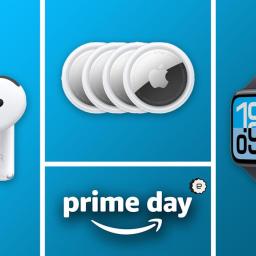 |
by Jeff Dunn on (#70FG8)
Amazon's latest October Prime Day sale has come and gone, but a number of Apple device deals we saw during the event are still available. If you've been waiting for a discount and don't want to hold out until Black Friday, gadgets like the AirPods 4, iPad (A16) and MacBook Air remain in stock for the lowest prices we've tracked. To make things a little easier for you, we've compiled all the best Prime Day Apple deals that are still live below. Best iPad deals still available Apple iPad Air (11-inch, M3) for $449 ($150 off MSRP): We call the Air the best Apple tablet for most people in our guide to the best iPads. While it's a good bit more expensive than the base model, it has a handful of subtle improvements that add up in day-to-day use. Its speakers are better. Its display is more color-rich, more glare-resistant and laminated, which means there's no gap" between the display and the actual glass. There's a faster chip and more RAM for gaming or more involved tasks. It also works with the Apple Pencil Pro and comfier Magic Keyboard. We saw the purple model fall as low as $437 on Prime Day, but this $150 discount matches the best price we've seen otherwise. Apple iPad Air (13-inch, M3) for $649 ($150 off): The 13-inch iPad Air is exactly the same as the 11-inch model, only it has a larger and slightly brighter display. It should be nice if you're willing to trade a little portability for more space for working or taking in movies. We gave this model a score of 89 in our review back in March. Apple iPad mini (A17 Pro) for $399 ($100 off): The iPad mini is exactly what it sounds like: the smaller iPad. This latest iteration has an improved A17 Pro chip - which is enough to support Apple Intelligence - along with 128GB of storage in the base model and Apple Pencil Pro support. As always, you'd buy it if you want a display you can more easily hold with one hand. This deal is $20 higher than the one we saw during Prime Day, but it's still a good drop compared to buying from Apple directly. Best Mac deals still available Apple MacBook Air (13-inch, M4) for $799 ($200 off): The MacBook Air tops our guide to the best laptops. The latest model isn't a major overhaul, but it's still exceptionally thin, lightweight and well-designed, and the M4 chip is more than powerful enough for everyday use. This deal ties the best price we've seen for the base model with 16GB of RAM and a 256GB SSD. Other configs with more memory and storage are $200 off and still in stock as well. Apple MacBook Air (15-inch, M4) for $999 ($200 off): The 15-inch MacBook Air is essentially the same as the 13-inch version, only it has a roomier display, a more spacious trackpad and better speakers. This deal is slightly higher than the laptop's all-time low, and it's another discount we've seen plenty of times before, but it's a decent drop from Apple's usual list price. Again, other versions with more memory and storage are also on sale. Apple Mac mini (M4) for $500 ($99 off): This latest iteration of Apple's tiny PC has a smaller footprint while adding a faster M4 chip, 16GB of RAM by default, two front-facing USB-C ports and an extra Thunderbolt 4 port. It can also drive three external displays, though it lacks USB-A ports entirely. We gave a higher-end config with Apple's M4 Pro chip a score of 90 in our review. This deal is for the entry-level model with the base M4 chip and a 256GB SSD - it's $30 above the all-time low but still a nice savings. Best AirPods deals still available Apple AirPods 4 for $89 ($40 off): The entry-level AirPods get you tons of Apple-friendly features - from fast pairing with your iCloud devices to spatial audio to hands-free Siri - and their lightweight design should fit most ears more comfortably than previous models. They still aren't the richest-sounding or longest-lasting pair, and they don't support wireless charging, Find My tracking or built-in volume controls. They won't block much outside noise either. But if you're an iPhone owner who truly hates the feeling of earphones that jut into your ear canal, they're a worthy value with this discount, which comes within a dollar of the lowest price we've seen. Engadget's Billy Steele gave the AirPods 4 a review score of 88 last year. Apple AirPods 4 with ANC for $119 ($60 off): This version of the AirPods 4 adds active noise cancellation (ANC), a wireless charging case and Find My tracking support. They have the same open-style design, so the ANC isn't as effective as what you'd get with a pair that fully seals off the ear canal, but it makes the earbuds more useful in noisy areas all the same. This pair earned a score of 86 in our review, and the discount matches the lowest price we've tracked. Apple AirPods Max (USB-C) for $429 ($120 off): The AirPods Max are bulkier and older than Sony's WH-1000XM6 - the top pick in our guide to the best wireless headphones - plus they rely on a weird, flimsy case to preserve power, so we only recommend them to hardcore Apple fans. That said, they offer most of the conveniences of the in-ear AirPods, while their ANC and warm sound profile still rank among the better options on the market. This model is virtually the same as the pair we reviewed way back in 2020, only it has a USB-C port and supports lossless audio with a cable. This discount is $30 off the pair's all-time low, but it's the best price we've seen since July. Best Apple accessories deals still available Apple Pencil Pro for $99 ($30 off): The Pencil Pro is Apple's premium stylus, offering pressure sensitivity, wireless charging, haptic feedback and unique gesture controls compared to the standard Pencil. It's a dependably tool for sketching and note-taking; just note that it's not compatible with the base iPad and most older models. This is another discount we've seen regularly over the past year, but it's $30 off the pen's list price. Best Apple Watch deals still available Apple Watch SE 3 (40mm, GPS) for $240 ($9 off): Apple only released its latest crop of Apple Watches last month, but Amazon is still selling each with a modest discount. The Watch SE 3, for instance, is available for $240: That's just $9 off its list price, but it's something if you're buying soon after launch anyway. As for the device itself, this third-gen version of the SE adds an always-on display, which makes it so you no longer have to wake the watch to check the time or your notifications. It now runs on the same S10 chip as its higher-end siblings, too, and it still covers the essential health and fitness features. If you're in the market for your first smartwatch, or if you only want a watch for step counting, sleep tracking and notifications, it should be a strong value. Apple Watch Series 11 (42mm, GPS) for $390 ($9 off): The Series 11 is the top overall pick in our guide to the best smartwatches. It's not as compelling as the SE 3 from a value perspective, but it has a bigger, brighter and more scratch-resistant display, slightly longer battery life and support for more advanced health features like hypertension alerts and an ECG app. We gave it a score of 90 in our review. Just note that there's no pressing need to upgrade if you're happy with your current Apple Watch. This is just a $9 discount, but we note it since the Series 11 has been on sale for less than a month, so any bit of savings are welcome. Apple Watch Ultra 3 (49mm) for $780 ($19 off): The Apple Watch Ultra 3 is a much more niche device than the Series 11 or SE 3, aimed at serious athletes and adventurers more than the typical gymgoer. It is the biggest and most rugged Apple Watch, with the brightest display (up to 3,000 nits), longest battery life (up to 42 hours) and most advanced components. It also supports satellite communications. The watch normally retails for $799, so this isn't a major discount, but since the Ultra 3 is a brand-new device, any drop at all is worth noting for early adopters.This article originally appeared on Engadget at https://www.engadget.com/deals/the-best-apple-deals-on-macbooks-airpods-ipads-and-more-following-amazons-prime-day-sale-125644027.html?src=rss
|
 |
by Valentina Palladino on (#70FK9)
With October Prime Day comes deals on all sorts of things, including tech and toys. Amazon has used the event to kickstart the holiday shopping season for the past few years, making it a good time to pick up early gifts for less and stock up on things for yourself without spending full price. Even if you missed the event, it's worth giving the leftover Prime Day Lego deals a look. A number of Lego sets, including some from the Super Mario, Star Wars and Harry Potter collections, are on sale for up to 49 percent off. When shopping for Lego sets on Amazon, we highly recommend checking a price tracker like Keepa or CamelCamelCamel before buying. It's not difficult to find Lego sets "on sale" at Amazon, but often those discounted prices have been around for a long time. We've clocked "deals" in which the sale price has been available for months already, going back as far as late spring and early summer 2025. Here, we're mostly highlighting discounts on new Lego sets, recent price drops and record-low (and close to them) prices on popular Lego sets from franchises like Star Wars, Super Mario and others. Best Lego deals still available following Prime Day This article originally appeared on Engadget at https://www.engadget.com/deals/these-are-the-best-lego-deals-that-are-still-available-on-star-wars-and-super-mario-sets-after-prime-day-121513705.html?src=rss
|
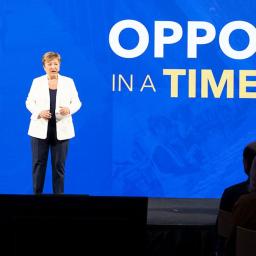 |
by Andre Revilla on (#70MS3)
Both the International Monetary Fund (IMF) and the Bank of England are warning of an AI bubble that could burst sooner than later, citing soaring valuations and stock prices. Speaking at the Milken Institute in Washington DC, Kristalina Georgieva, managing director of the IMF, said that "uncertainty is the new normal and it is here to stay" and that we should all "buckle up." In discussing financial conditions, she said that "fired up by optimism about the productivity-enhancing potential of AI, global equity prices are surging."The Bank of England, for its part, has said that "the risk of a sharp market correction has increased," and that "equity market valuations appear stretched, particularly for technology companies focused on artificial intelligence (AI)." It also notes the increasingly common concern that AI might not deliver all that it has promised. A record of a recent Financial Policy Committee meeting at the Bank of England reads, "downside factors included disappointing AI capability/adoption progress or increased competition, which could drive a re-evaluation of currently high expected future earnings."The AI craze has been in full swing since the release of OpenAI's ChatGPT in 2022 and its explosive growth since then. The chatbot kicked off a flurry of investment, such as Microsoft's multibillion-dollar deal in 2023. And, of course, the biggest tech companies followed OpenAI's lead with products like Google's Gemini, Microsoft Copilot and Apple Intelligence.Since then, the ChatGPT maker has inked hundreds of billions of dollars in purchasing and investment agreements with the likes of AMD and NVIDIA in the race for AI dominance. Competitors like Anthropic, whose CEO thinks AI will replace half of all white-collar jobs within five years, have found the backing of other tech giants like Google and Amazon.Integrations for AI tools continue to grow, and the proliferation of the technology keeps entering new spaces, like music. There's no telling how everything will play out, but in the meantime AI can help us shop for shoes by looking at our feet.This article originally appeared on Engadget at https://www.engadget.com/ai/leading-financial-institutions-are-worried-about-a-looming-ai-bubble-130827642.html?src=rss
|
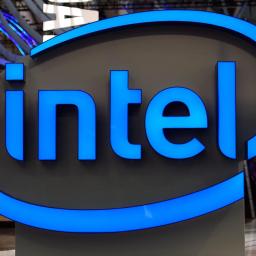 |
by Steve Dent on (#70MS4)
If Intel wants to come back as a chip fab, its upcoming Core Ultra series 3 laptop processors will be a crucial part of that. The company has just revealed more information about those processors (codenamed Panther Lake), that will use its 2-nanometer 18A process and be built in the US at its Arizona plant.The Core Ultra series 3 system-on-chips will be utilized mainly in high-end laptops along with "gaming devices and edge solutions," Intel said. The company noted that they'd blend "Lunar Lake-level power efficiency with Arrow Lake-class performance," though it usually boasts that with all new Core chips.They'll offer up to 50 percent more processing performance compared to previous generations, with some versions sporting as many as 16 performance cores (P-cores), along with efficiency cores (E-cores). Chip density will improve by 30 percent, while performance per watt will rise 15 percent.Intel's integrated Arc GPU also sees a 50 percent performance bump compared to the last generation, with a maximum of 12 cores in high-end versions. They'll also see an updated XPU design for AI acceleration with up to 180 Platform TOPS (trillions of operations per second).Intel called its 18A architecture "the most advanced semiconductor node developed and manufactured in the United States," adding that it's "fully operational and set to reach high-volume production later this year." As recently as two months ago, however, the company was reportedly struggling with the yields it would need to even start production, let alone make a profit.It would be an understatement to say that Intel needs the new node to succeed. In August President Donald Trump said that the company's new CEO Lip-Bu Tan should resign before walking that back after a successful meeting between the two. Later, Trump announced that the US government was taking a 9.9 percent ($8.9 billion stake in Intel) and last month, NVIDIA said it was throwing Intel a $5 billion lifeline to the company forPC and data center CPUs. In its July Q2 earnings report, Intel said it lost $2.9 billion and would lay off up to 20 percent of its workforce.This article originally appeared on Engadget at https://www.engadget.com/computing/intel-gives-us-a-glimpse-of-its-panther-lake-core-ultra-chips-130010879.html?src=rss
|
 |
by Mariella Moon on (#70MS5)
Back in January, Netflix co-chief executive officer Gregory Peters said the service is rolling out party and couch co-op games that you can stream online in the future. Now, Peters has announced that several party game titles that you can play on your TV are coming this holiday season at the Bloomberg Screentime conference in Los Angeles. "We're creating a completely new way to play games - one that's as easy as streaming a show on a Friday night," the service said in its announcement.The new games, which you can play with friends for free, include Lego: Party, a title that will typically cost you $40. You'll also be able to play Boggle Party, wherein you compete with friends by finding words in a jumbled-up letter grid within a time limit, and Pictionary: Game Night that will have you guessing what your friends are drawing. In Tetris Time Warp, you and your friends can play different eras of of the game, from the 1984 original to the classic Gameboy version. Finally, in Party Crashers: Fool Your Friends, you'll have to play detective and deduce which friend is the "party crasher." To play the games, you can turn your phone into a controller by scanning a QR code.Netflix's gaming push showed signs of trouble earlier this year when its canceled release plans for six titles that were already announced and removed 20 titles from its library, including popular ones like Hades. The company then chose to prioritize specific categories for a more focused library, namely party games, games for kids, well-known titles like Grand Theft Auto and games based on its shows like Stranger Things.Some people have been seeing the Games tab on their TV for a while now, but it only contained the same games you can play on mobile. These new party games will initially be "available on select TVs," such as on devices powered by Roku, and only "in certain countries" only. In its announcement, though, the company said it "plans to roll out [games on TV] further over time."This article originally appeared on Engadget at https://www.engadget.com/entertainment/streaming/netflix-is-bringing-party-games-to-tvs-123034128.html?src=rss
|
 |
by Tim Stevens on (#70MJ7)
Sound is a complicated topic in cars. Some cars are good because they're very loud. Some cars are good because they're very quiet. A select few cars can be counted in both categories. Really, only Hyundai's Ioniq 5 N has managed to check both boxes, but if Ferrari's promises about its first EV are to be believed, we may soon have another entrant.At an event at the company's headquarters in Maranello, Italy, Ferrari unveiled the first proper details about its first EV, the Elettrica, which is set to fully debut next year. We're missing a few key details (such as what it looks like), but after spending a day talking to the various engineers behind this machine, I can finally reveal what makes this car move and how it might sound, too.Power is a key metric for any Ferrari, and the Elettrica has plenty of that. Four electric motors, one per wheel, combine to generate a figure somewhere over 1,000 horsepower. That would put it close to the power of the company's new F80 supercar, but in an era of 2,000-hp EVs, the Elettrica's output isn't exactly stunning.This is something even Ferrari's chief product development officer, Gianmaria Fulgenzi, admitted: "It's very easy and simple to create power in an electric engine. It's not difficult." Cornering, he said, is what it's really all about. He called current performance EVs "elephants," capable of going quickly in a straight line but failing miserably at being compelling machines to drive.That's partly why the Elettrica has four motors. That way, the car's traction and stability management systems can modulate power to maximize grip at each tire individually, rather than relying on one or two motors with differentials to try to manage wheelspin.But it goes deeper than that. The Elettrica can also steer each rear wheel independently, more or less on the inside or outside of the turn to help manage (or perhaps even induce) oversteer.The front motors and inverter on the Ferrari Elettrica.FerrariFinally, the Elettrica will have active suspension, a novel type that debuted on the Purosangue SUV and is also used on the F80 supercar. Ferrari's dampers replace traditional valves and oil with an electric motor that provides the resistance. This means, again, the damping and ride height of the car can be adjusted independently at each corner, nearly instantly.All that, Ferrari CEO Benedetto Vigna said, will result in an EV that drives like none other on the road: "We want to show that we are able to harness any technology in a unique way." Making a compelling EV, a type of car that many decry as too samey, would be a bold way to do it.One key factor to this is a unique sound. Ferrari engineers knew that they needed to come up with some sort of acoustic accompaniment for the Elettrica, but they also knew it had to be authentic. "We didn't create a fake sound, like a starship or something like that," Fulgenzi said. "We wanted to have exactly the sound of the electric engine."Ferrari came up with a solution similar to the one Porsche used for the Taycan, but it executed it in a novel way. In the Taycan, Porsche sampled and remixed the sounds of the car's electrical components. For the Elettrica, Ferrari actually installs an accelerometer inside the casing of the rear electric motors. That sensor picks up the harmonic resonance and runs it through a digital amplifier to create a sound that isn't a sample - it's actually coming directly from those motors.Fulgenzi likens it to an amp on an electric guitar, picking up the near-inaudible vibration of the strings and turning it into (potentially ear-splitting) sound. That's perhaps a bit aspirational, but the proof of course will be in the listening, something that Ferrari sadly hasn't let me (or anyone else) do just yet.The rear motor and inverter for the Ferrari Elettrica.FerrariThey're also not showing anyone what the thing looks like, but it seems safe to expect that this machine will bear a shape and design unlike any Ferrari that's come before. That's because Ferrari is, for the first time, working with design house LoveFrom, better known as the house that Jony Ive built after leaving Apple in 2019 and then sold to OpenAI for $6.5 billion.LoveFrom has worked on a fair few projects since its inception, but this will be the company's first car. Given that, we have absolutely nothing to go on when it comes to visual style. But if I had to guess, I'd say something with a minimalist vibe is on the menu based on Ive's previous work. (And also his own car collection, which features a lot of classic bits of iconic British motoring.)What we do know is that the Elettrica will have four doors and four seats. No, then, this won't be a proper sports car, instead sitting somewhere between grand tourer and SUV. It'll be something designed with a bit of practicality and comfort, able to waft calmly and quietly if you like. Or, with the twist of a few knobs on the steering wheel, it's able to tighten up and get loud when you're feeling more rowdy.With somewhere north of 330 miles of range, it should make for a decent tourer, too. That comes from a 122 kWh (gross) battery pack that's split up into 15 modules, each containing 14 NMC pouch cells. The cells are initially sourced from SK On, but Ferrari made it clear they're not tied to that supplier.Indeed, the company hopes to evolve the battery pack design and chemistry over the years, keeping some version of it available for decades to come. This is, after all, a Ferrari, a machine that ostensibly will just keep getting more valuable as it ages. That, though, is a challenge currently stymying other makers of premium EVs.Can Ferrari make a truly desirable, truly premium EV? Having Jony Ive's name attached certainly doesn't hurt. We'll all have to wait until early next year to see how it looks and how it sounds. I personally won't get too excited about this car until then, but I am very glad that it even exists. Back in 2011, Luca Di Montezemelo, then-CEO of Ferrari, told me that Ferrari would never make an EV. I was skeptical of his statement back then, and 14 years later, I'm glad to see the company finally coming around.This article originally appeared on Engadget at https://www.engadget.com/transportation/evs/ferraris-first-ev-is-coming-next-year-with-big-speed-big-sound-and-a-jony-ive-design-083000380.html?src=rss
|
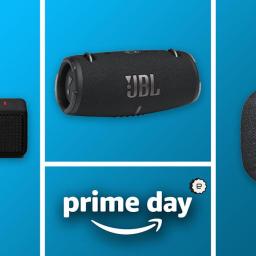 |
by Sam Chapman on (#70K2R)
Amazon Prime Day is nearly over, but our audio experts are still sifting through Amazon for bargains on the best smart speakers, soundbars and portable blueetooth speakers. We're always ready to argue this high-quality speakers are a worthwhile investment, adding new dimensions to any kind of entertainment - and with these deals on top speakers from JBL, Bose, Beats, Marshall and more, there's no excuse not to upgrade. Whether you're building a permanent setup for your home theater or chaining portable speakers together to blast dance tunes through an outdoor party venue, we bet you'll find some deals to love on this curated list. Best Prime Day bluetooth speaker deals
|
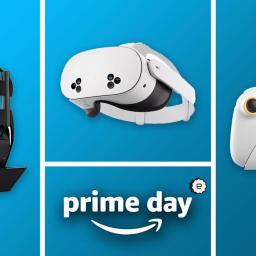 |
by Jeff Dunn on (#70JTE)
Amazon's October Prime Day sale tends to be a decent source of discounts for gaming gear, and the latest iteration of the Prime Big Deal Days" event is no exception. Several games, mice, controllers and other accessories we like remain on sale as we approach the end of the two-day event, so if you just can't wait until Black Friday, we've rounded up the best Prime Day deals on gaming devices below. Just remember that you need to be a Prime member to access some of the offers, and that the event as a whole ends at 3AM ET on October 9. Best Prime Day video game deals Elden Ring (PS5) for $30 ($20 off MSRP): You've probably heard about it by now, but the action-RPG Elden Ring is both challenging and darkly funny, with a world that runs incredibly deep and feels lived-in a way few games have. It's unafraid to test your resolve, yet it always grants you the freedom to simply turn around and find another path forward. Final Fantasy VII Rebirth (PS5) for $35 ($15 off): Engadget's Mat Smith gave this grandiose action-RPG a favorable review last year. You need to have played its predecessor - and ideally, the original PS1 game - to get the most out of it, but it's positively stuffed with things to do, and its combat system is still a tactical rush at its best. Gran Turismo 7 for $30 ($40 off): Gran Turismo 7 is the PS5's premier sim racer, and a love letter to automobiles as a whole. Like the rest of the GT series, it revels in the patience and precision required to figure out how a given car meshes with a given course. Learning the intricacies of each combination is both intense and rewarding, and there's a singular style to it all that just doesn't exist with most sports games. Returnal for $30 ($70 off): Returnal is a third-person shooter roguelike that's at once a technical showcase, a stiff challenge and an achingly beautiful reflection on the nature of grief. It is not for the faint of heart, but its bullet-hell battles are wonderfully fierce, and just about everything in it contributes to its overarching story. It's also worth checking out if you're eager to developer Housemarque's next game, Saros, which seems to borrow many of the elements introduced here. The Last of Us Part I for $30 ($40 off): The PS5 remake of Sony's zombie drama is one of the most unnecessary remakes ever made, but if you've never played one of the earlier versions, this is the best way to rectify that. If you're looking to play the (even moodier) sequel, the PS5 version of that one is similarly discounted. God of War Ragnarok for $30 ($40 off): Ragnarok is another Sony sequel that's more about increasing scope than radically reinventing itself, but its Norse world is beautifully varied and detailed, smashing baddies with a magic axe feels great, and the whole thing is excessive in the way you'd expect a God of War game to be without going overboard. Horizon Forbidden West for $30 ($40 off): Engadget's Jess Conditt called Horizon Forbidden West the total package" in her review a few years back, praising its frenzied combat, gorgeous art direction and complex narrative. It still has one of the more distinctive post-apocalypses in gaming, blending robot beasts with stunning vistas. That helps paper over some less-than-inspired side content and bits of sluggish pacing. Final Fantasy XVI (PS5) for $23 ($7 off): Final Fantasy XVI is a more straightforward action-RPG than something like Final Fantasy VII Rebirth: You don't need to come in with prior knowledge of any other story, and its hack-and-slash combat is simple to pick up. It can get bogged down in pointless side quests, but its main concern is having you watch giant demigods melodramatically smack each other, and there's nothing wrong with that. Armored Core VI: Fires of Rubicon for $20 ($10 off): Armored Core VI is a big loud action game about building a mech and using it to blow up everything in sight. It rules. But it's not mindless: Its many boss fights are genuine duels, and it's deeply flexible in how it lets you tweak your death machine to tackle stages in different ways. This ties the best price we've seen for the PS5 version. Metaphor: ReFantazio (Xbox) for $16 ($54 off): It's about as subtle as you'd expect a game named Metaphor" to be, but the latest from the minds behind Persona 5 is a fantasy JRPG through and through: bombastic, stylish and deeply earnest. (And long.) This deal represents a new low, though it only applies to the Xbox copy. Madden NFL 26for $37 ($33 off): It always feels like Madden could use a creative reset, but at the end of the day, it's Madden, and it works fine enough if you just want to scratch the pro football game itch. This is the largest discount we've seen for the latest entry, and it applies to the PS5, Xbox and Switch 2 copies. Xbox Game Pass Ultimate (3-month) for $57 ($33 off): It hasn't exactly been a great stretch for Xbox lately, what with Microsoft jacking up console prices, laying off huge swaths of employees and massively hiking the cost of its Game Pass service to $30 per month. But if you aren't looking to cancel your Game Pass subscription as a result, you can still grab three months of the top-end Ultimate tier for a little less than its old going rate. While the service itself may end up being too pricey in the long term, it's still home to a wide range of games worth checking out, so this offer might be useful if you have some free time coming up and want to blast through a few titles you've been meaning to get around to. Best Prime Day gaming device deals Astro A50 X gaming headset for $315 ($75 off): The A50 X is an upgrade pick in our guide to the best gaming headsets. It should specifically appeal to those who own multiple gaming systems, as its base station lets you connect and swap between PC, PS5 and Xbox audio with the press of a button. It's among the better-sounding wireless headsets we've tried as well, and its mic is fantastic. This deal isn't an all-time low, but it's the largest drop we've seen since February. The standard Astro A50 is also on sale for $237; that one works just as well if you only play on one device, but it lacks HDMI switching functionality. 8BitDo Ultimate 2 Wireless Controller for $48 ($12 off): The Ultimate 2 is a versatile wireless gamepad for Windows PCs and mobile devices. It can connect over Bluetooth, a wireless dongle or a USB cable, and its magnetic TMR joysticks should be far less susceptible to joystick drift" than typical controllers. Those with large hands may find it a touch too small, but it's built well, it comes with a handy charging dock and it gets a solid 20 or so hours of battery life. 8BitDo's companion software includes a variety of useful customizations beyond that. This isn't an all-time low, but it's still a few bucks below the pad's typical street price. Corsair Scimitar RGB Elite MMO gaming mouse for $55 ($25 off): We recommend the Scimitar RGB Elite to MMO and MOBA players in our guide to the best gaming mice. It's not the lightest or most technically advanced model, but it comes with 12 comfortable and easy-to-reach side buttons, which make it easier to pull off more complex actions in games like World of Warcraft or Final Fantasy XIV. We've seen it fall below $50 a few times before, but this deal matches the lowest price we've tracked since May. A newer wireless model called the Scimitar Elite Wireless SE is also on sale for a low of $80. Razer Basilisk V3 gaming mouse for $30 ($40 off): We recommend the Basilisk V3 in our gaming mouse guide for those who don't mind using a cable and prefer a more ergonomic right-handed shape. This is its lowest price to date. Note that Razer now sells a newer version with an improved sensor, but that one costs $49 more and isn't a massive upgrade in real-world use. Razer DeathAdder V3 HyperSpeed gaming mouse for $71 ($29 off): The wireless DeathAdder V3 HyperSpeed is another recommendation from our gaming mouse buying guide. For less than $100, it gets you a sturdy yet superlight design that weighs just 55 grams - making it easy to flick around in fast-paced games - and doesn't have any annoying cutouts in its outer shell. Its contoured shape should fit most small- to medium-sized hands comfortably, and it performs reliably for competitive play. This deal is an all-time low. Keychron Q3 Max mechanical keyboard for $195 ($35 off): The Keychron Q Max series is the top pick in our guide to the best mechanical keyboards, pairing an upscale (if heavy) aluminum case with a lovely typing experience and extensive customizability. This isn't the lowest price we've ever seen for the tenkeyless model, but it's a rare drop from the board's typical street price. Other size layouts are discounted as well. ASUS ROG Strix Scope II 96 Wireless mechanical keyboard for $151 ($59 off): We speak positively about this model in our guide to the best gaming keyboards. Its sturdy case, crisp keycaps and battery life all impress, while the thocky NX Snow switches in this model feel and sound delightful. Its companion software is a bit of a mess, and its 96 percent layout may feel a little cramped to some, but it's a nice buy if you want a higher-class pre-built keyboard. This is the lowest price we've seen since March. ASUS ROG Azoth mechanical keyboard for $155 ($120 off): It's a couple years old at this point, but the ROG Azoth remains an exceptionally well-built mechanical keyboard for enthusiasts. Its gasket-mounted design and layers of foam give each key press a soft landing, while its pre-lubed switches feel nice and smooth. It even comes with a toolkit for manually lubing the switches down the road, and the PCB is hot-swappable if you ever want to switch things up. There's a useful control knob and programmable OLED display for quickly adjusting settings and checking the battery level beyond that. ASUS' Armoury Crate software is still fairly sloppy, however. This deal comes within a couple bucks of the lowest price we've seen for a model with the linear NX Snow switches. PNY microSD Express Card (128GB) for $38 ($7 off): We generally recommend getting at least 256GB of storage from your Switch 2 microSD card, since recent games can fill up that space pretty quickly. But if you only want a little bit extra, this is the lowest price we've seen for PNY's 128GB model. Just note that this card is technically the slowest we've tested when it came to moving games to the card from the Switch's internal storage, though it's perfectly fine for in-game tasks. Seagate Storage Expansion Card for Xbox Series X/S (2TB) for $190 ($170 off): It's annoying, but the only way to fully add storage to an Xbox Series X/S is to use a proprietary expansion card. Seagate's model is one of the very few examples of those, and this discount marks the lowest price we've seen for the 2TB variant in the past year. Yes, it's still overpriced compared to a normal SSD, but any extra savings should be welcome. Crucial X9 Pro (1TB) portable SSD for $75 ($26 off): If you're looking to offload some games to external storage, we consider the Crucial X9 Pro the best portable SSD for most people, as it offers fast enough transfer speeds in a rugged and compact design. This isn't the best price ever for the 1TB model but it matches the largest discount we've seen since April. Other size options are also on sale. Crucial P310 (1TB) M.2 2230 SSD for $80 ($55 off): The P310 is a small-size SSD you can use to add storage to a handheld PC like the Steam Deck or ASUS ROG Ally. It uses cheaper QLC memory, not the faster and more durable TLC, but reviews say that it performs well anyway. This deal ties the best price we've seen for the 1TB version since April.This article originally appeared on Engadget at https://www.engadget.com/deals/the-best-prime-day-gaming-deals-that-are-still-available-save-on-ps5-games-headsets-controllers-and-more-082623683.html?src=rss
|
 |
by Valentina Palladino on (#70JTD)
While you can often find discounts on Echo speakers, Fire tablets, Kindles and other Amazon devices throughout the year, Amazon Prime Day is the best time to buy them, period. Prime Day is basically Black Friday for all Amazon-made gear, provided you're a Prime member who can actually participate in the members-only shopping event. In recent years, October Prime Day discounts on these gadgets have been the same or even better than those we've seen during the holiday shopping season. For October Prime Day, you'll find most of Amazon's devices on sale for record-low prices (or close to them). These are the best October Prime Day deals you can get on Kindles, Fire TVs, Echos and more before the sale ends tonight. Prime Day Kindle deals Kindle Kids for $95 ($35 off): This is the same device as the base Kindle, but it becomes more kid-friendly thanks to the included cover, two-year warranty and the included year of Amazon Kids+, which gives children ages 3-12 access to hundreds of appropriate ebooks and audiobooks. Just be sure to take note when you activate that subscription because it will renew after one year at the standard $6/month rate. Kindle Paperwhite for $125 ($35 off): The latest version of the Paperwhite has a seven-inch display, thinner bezels, an adjustable warm light, speedier page turns and a battery that can last up to 12 weeks on a single charge. This model is also IPX8 waterproof and has built-in Audible integration. Kindle Colorsoft for $200 ($50 off): Amazon's only color e-reader has a seven-inch, high-contrast display, an auto-adjusting front light, a color highlighting feature and an eight-week battery life. Kindle Scribe for $300 ($100 off): The Scribe is one of the best E-Ink tablets you can buy at the moment, and certainly the top pick if you want a writable table that also excels as an ereader. It provides a great reading and writing experience, thanks in part to its ability to access the entire Kindle ebook library, and it has handy Google Drive, Microsoft OneDrive and Dropbox integration. Prime Day Echo deals Echo Pop speaker for $25 (38 percent off): One of the newer Echo devices available, the Pop it sports a 1.95-inch front-facing speaker and a physical mic mute switch for extra privacy. The Pop also has built-in eero compatibility, so it can extend the area of your home Wi-Fi network if you already have an eero router system. Echo Dot speaker for $35 (30 percent off): One of the smallest Echo speakers, this version of the Dot has improved audio and a compact design that will fit almost anywhere. You'll control it mostly with Alexa voice commands, but there are a few onboard buttons, including a mic-off button for when you need more privacy. Echo Show 5 for $55 (39 percent off): This model is one of our favorite smart displays thanks to its compact design, ambient light sensor and sunrise alarm feature, all of which make it an excellent smart alarm clock. Amazon improved the speaker quality on this latest model, which gives sound deeper bass and clearer vocals. Echo Show 8 for $100 (33 percent off): This is our current top pick for the best smart display with Amazon's Alexa thanks in part to its 8-inch touchscreen, 13MP camera that supports auto-framing for better video chats and its built-in Zigbee smart home hub. The 2023 model supports Visual ID, which will show personalized information on the device's display depending on who's using it, and video streaming from Netflix, Hulu, Prime Video and other services. Prime Day Fire TV deals Fire TV Stick 4K for $25 (50 percent off): This is the cheapest Fire TV Stick you can get to stream 4K content, plus it has support for Wi-Fi 6 and Dolby Vision and Atmos. With its live picture-in-picture feature, you can view security camera feeds right on your TV while you're watching your favorite show or movie. Fire TV Stick 4K Max for $40 (33 percent off): In addition to 4K HDR streaming with Dolby Vision and Atmos support, the 4K Max dongle includes Wi-Fi 6E connectivity, 16GB of built-in storage and live picture-in-picture capabilities. It also supports the Fire TV ambient experience," which lets you display photos and images on your TV screen when you're not actively watching something. Fire TV Cube streaming box for $100 (29 percent off): This model will provide the best performance of any Fire TV streaming device, and it supports 4K HDR content, Dolby Vision and Atmos and an enhanced version of the Alexa Voice Remote. Along with live picture-in-picture view and the Fire TV ambient experience, you can also hardware other devices to the Fire TV Cube including a cable box or a game console. Prime Day Fire tablet deals Fire HD 8 tablet for $55 (45 percent off): This is Amazon's most bare-bones tablet, featuring an eight-inch HD touchscreen, hexa-core processor and 13 hours of battery life. The improvements in the screen quality alone from the old-school Fire 7 tablet make it a better buy for most people, and this slab would make a good couch device for general web browsing, email checking, online shopping and more. Fire Max 11 tablet for $140 (39 percent off): Amazon's most powerful tablet, the Fire Max 11 sports an 11-inch 2,000 x 1,200 touchscreen, an octa-core processor, up to 128GB of storage and 14 hours of battery life. It also works with a number of optional accessories, including a stylus and keyboard case. Fire HD 10 Kids tablet for $105 (45 percent off): This slab is designed for kids aged three to seven, with full parental controls plus one year of Amazon Kids+ for free with the tablet purchase. This model has a 10-inch FHD touchscreen, an octa-core processor and 13 hours of battery life, plus it comes with a two-year warranty and a protective case. Fire HD 10 Kids Pro tablet for $105 (45 percent off): This model is designed for kids aged six to 12 and comes with a slimmer protective case, a two-year warranty and one year of access to Amazon Kids+. Otherwise, you get a very similar experience here that you would with the non-Pro version, including parental controls, a 10-inch touchscreen, solid performance and a 13-hour battery life.This article originally appeared on Engadget at https://www.engadget.com/deals/the-best-amazon-prime-day-deals-on-kindles-echo-speakers-fire-tv-devices-and-more-for-day-2-081210482.html?src=rss
|
 |
by Sam Chapman on (#70DV6)
It's the final day of Amazon Prime Day, but it's not too late to get a heavy discount on a traditional or robotic vacuums from Amazon. We're hoping this sale helps ease some of the more granular vacuum-related decisions. Should you go corded, cordless or robotic? Dyson, iRobot or Shark? Are there any decent robotic vacuums that aren't Roombas? (Yes.) Until the very end of the Big Deal Days sale tonight, but until the very end, we'll search for discounts as tirelessly as an automated vacuum scours your floors for dirt, and post all the best deals here. Best Prime Day robot vacuum deals
|
 |
by Jeff Dunn on (#70FSS)
While Black Friday remains the best time to grab a new TV at a discount, Amazon's latest October Prime Day sale has been a good opportunity to take the plunge if you need to upgrade right away. We're into the second and final day of the "Prime Big Deal Days" event, but several well-reviewed sets from LG, Samsung, Sony and other name brands remain at or near their lowest prices to date. We've picked through the best October Prime Day TV deals that are still available below, along with a few choice discounts on streaming devices we like. Just remember that some deals are exclusive to Prime subscribers. Best Prime Day 4K TV deals TCL QM7K 55-inch Mini-LED 4K TV for $570 ($330 off MSRP): If you're willing to stretch your budget a little further, the TCL QM7K is a fairly comprehensive step up, with noticeably improved contrast, brightness and color volume. It has a 144Hz refresh rate with 288Hz support at 1080p, too, though it's still limited to two HDMI 2.1 ports. (As with the QM6K, however, neither of those is an eARC port, so hooking up a soundbar won't block a game console if you have multiple systems.) This discount represents a new low, beating the previous best mark we've seen by roughly $30. Hisense U8QG 65-inch Mini-LED 4K TV for $998 ($500 off):Several reviews suggest that the Hisense U8QG ticks most of the requisite boxes for a LCD TV in 2025: robust local dimming and mini-LED backlighting, exceptionally high brightness, vibrant quantum-dot colors, a fast refresh rate (165Hz in this case), support for the major HDR formats and so on. It's a higher-end option than something like the TCL QM6K or QM7K with superior brightness and contrast, though it still falls short of a good OLED TV when it comes to the latter. Like most LCD panels, it'll also look a bit washed out if you view it from an angle. It has three HDMI 2.1 ports, which is one fewer than many other TVs in this price range, though it uniquely includes a USB-C video input if you want to hook up a gaming laptop or Nintendo Switch. (Just note that you won't get VRR or HDR when using that.) You'd mainly get it over an OLED TV if you're willing to trade some picture quality for something better-suited in a bright room. This deal on the 65-inch model matches the best price we've tracked. Samsung S90F 55-inch QD-OLED 4K TV for $1,100 ($498 off): The Samsung S90F is an upper-tier model with a QD-OLED panel, which blends the usual perks of a quality OLED set - near-perfect contrast, wide viewing angles, clear motion, low input lag - with a layer of quantum dots. This helps it produce a wider gamut of more vivid colors compared to traditional WOLED TVs. It also comes with four HDMI 2.1 ports and has a fast refresh rate of 144Hz. It doesn't support Dolby Vision HDR, however, and reviews we trust say that the LG C5, a competing WOLED model, retains darker black levels in a bright room. This deal marks a new low for the 55-inch model, while the 65-inch and 77-inch versions are also at all-time lows of $1,598 and $2,298, respectively. Just make sure you only buy the 55-, 65- or 77-inch model, as every other size in the US uses a lesser WOLED panel. Shady, we know. LG C5 65-inch OLED 4K TV for $1,373 ($1,309 off): The LG C5 can't produce the same bold colors as a QD-OLED display like the Samsung S90F, but reviews almost universally agree that it's an exceptional OLED TV otherwise. It should get brighter with non-HDR content, and as noted above it should produce deeper blacks in well-lit environments. It also has just about all the essential gaming features, plus it supports the popular Dolby Vision HDR format (but not HDR10+). If you need that, or if you want an OLED set in this price range for a bright-ish room, it's well worth a look. This is nearly an all-time low for the 65-inch model, beating its typical street price by about $125. You should see the full discount at checkout. Other sizes are also on sale, but note that the 42- and 48-inch models can't get as bright as the larger versions. LG B5 55-inch OLED 4K TV for $997 ($100 off): The B5 is LG's entry-level OLED TV for 2025, and as such it's a level below the C5 in terms of brightness and color performance. It's technically limited to a 120Hz refresh rate instead of 144Hz as well, though that isn't a huge deal right now unless you plan on hooking up a gaming PC. If anything, last year's LG C4 - which isn't seriously discounted as of this writing - is a better value for most on the whole. But if you just want to save cash, the B5 still provides most of the core benefits of an OLED display at a lower price. This is a new all-time low for the 55-inch variant. Samsung S95F 55-inch QD-OLED 4K TV for $1,998 ($200 off): If you're willing to pay for a top-of-the-line OLED TV, the Samsung S95F should fit the bill. Reviews around the web praise it for being especially bright for an OLED TV while retaining the bold colors and superb contrast you'd want from a high-end QD-OLED panel. That brightness combined with the screen's matte finish means it's particularly adept at fending off glare, so it'll be effective in either a dark or bright room. It's also loaded with gaming features, including a 165Hz refresh rate. That said, the matte coating means black levels won't be as deep in a well-lit environment, and there's still no Dolby Vision support. This is the lowest price we've seen for the 55-inch model. LG G5 55-inch OLED 4K TV for $1,747 ($753 off): The LG G5 competes with the Samsung S95F in the top end of the OLED TV market. Most reviews say it can get even brighter than Samsung's model, it supports Dolby Vision and its lack of a matte coating means it won't lose its inky black levels in a bright room. That said, having a glossy finish also means that it's more susceptible to direct reflections. And while its picture is a level above most other WOLED TVs, it isn't quite on par with the S95F when it comes to color volume. Still, if you're mainly going to watch things in the dark, it might be the better buy. This is a new low for the 55-inch variant. Sony Bravia 8 II 65-inch QD-OLED 4K TV for $2,798 ($702 off): It's certainly not cheap, but the Sony Bravia 8 II has earned plaudits for its excellent image processing, upscaling and overall accuracy alongside the expected color, contrast and motion benefits of its QD-OLED display. This should help it make lots of movies and shows look closer to their original intent. It also uses the handy Google TV interface. This deal marks the best price to date for the 65-inch version. That said, if you can't stomach the high price, other reviews note that the older Sony A95L offers similar performance a bit less, while more recent competitors like the LG G5 and Samsung S95F can get noticeably brighter (even if they're not always as accurate). Those two should be better for gaming as well, as the Bravia 8 II only has two HDMI 2.1 ports - one of which is an eARC port for soundbars - and its input lag is slightly higher. Sony Bravia 9 75-inch Mini-LED 4K TV for $2,798 ($702 off): The Bravia 9 is Sony's flagship mini-LED TV. It's pricier than many OLED TVs, but most reviews say that it produces better contrast and black levels than the vast majority of non-OLED sets, with minimal light bloom around bright objects onscreen. So it's still a strong performer in a dark room. Like the best LCD TVs, it can also get super bright, and it delivers the excellent upscaling and image processing that high-end Sony TVs are known for, so it should make old DVDs and lower-quality streams look their best. That said, the top OLED TVs still have it beat when it comes to contrast, color volume and viewing angles. It's also not the best choice for gaming, since it's limited to two HDMI 2.1 ports and has slightly higher input lag than other models. But if money is no object and you don't want to go OLED, it should satisfy. This discount matches the lowest price we've seen for the 75-inch version. Best Prime Day streaming device deals Roku Streaming Stick 4K for $30 ($20 off): The Streaming Stick 4K is worth considering if you prefer a stick-style streamer that plugs directly into your TV, or if you're partial to Roku's app-centric interface, which many find simpler to navigate than the content-heavy UIs pushed by Google and Amazon. It supports Apple AirPlay and the major HDR formats, and its performance remains quick enough for most. You'll have to deal with some ads, though, and no Roku player supports the Twitch app. This deal is $5 more than the device's all-time low but ties the best price we've seen in several years. Roku Streaming Stick Plus for $24 ($16 off): The Streaming Stick Plus is cheaper alternative to the Streaming Stick 4K with no Dolby Vision support and no long-range Wi-Fi extender built in. The latter means it may be less reliable if you don't get a consistent connection in your TV's room. (Both sticks are limited to Wi-Fi 5, though.) That said, this model can typically be powered straight from a TV's USB port instead of requiring a separate power supply. If you can live with the sacrifices, it may not be worth paying extra. This deal represents a new all-time low. Roku Ultra for $69 ($31 off): You'd buy the Roku Ultra if you want the Roku interface in a set-top box design with built-in Ethernet and USB ports. Unlike the company's streaming sticks, it comes bundled with a rechargeable remote that supports voice controls, a lost remote finder tool and backlit buttons. (You can buy that separately, though.) This latest model also has a faster processor and Wi-Fi 6 support. This deal ties an all-time low. Amazon Fire TV Stick 4K for $25 ($25 off): The standard Amazon Fire TV Stick 4K offers the same core experience as the pricier Fire TV Stick 4K Max, only it comes with a slightly slower processor, half the storage (8GB) and Wi-Fi 6 instead of Wi-Fi 6E. For most people just looking for a casual streamer on the cheap, those shouldn't be huge losses. This model is also more powerful than the just-announced Fire TV 4K Select, though its Fire OS interface can still be messy and ad-heavy, with special emphasis on Amazon's own services. This deal is $3 more than the stick's all-time low, though it matches the best price we've seen since Black Friday last year. Amazon Fire TV Stick HD for $18 ($17 off): The Fire TV Stick HD is the budget pick in our guide to the best streaming devices. It can only stream up to 1080p, and it can run a bit choppier than the 4K models since it has a slower chipset and half the RAM (1GB). The usual issues with the Fire TV interface still apply here too. But if you just want to add streaming apps to an aging TV or basic monitor for as little cash as possible, it should get the job done. This discount ties the device's lowest price to date.This article originally appeared on Engadget at https://www.engadget.com/deals/the-best-prime-day-tv-deals-still-available-on-day-2-take-up-to-500-off-sets-from-samsung-lg-sony-and-more-180051817.html?src=rss
|
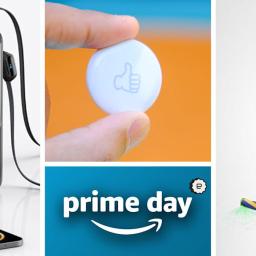 |
by Valentina Palladino on (#70MCW)
This year's fallPrime Dayis almost on the books. But you still have time to save on some of our favorite tech. Yes, it's October and it's a little early to start thinking about holiday shopping. But it would be remiss to ignore the upcoming festivities entirely because you can actually save some money on good gadgets during this sale. But let's be real: Amazon doesn't always make it easy to find what you're looking for. Amongst the pages and pages of bad deals you could sift through, you may come across a couple of actually good deals on tech that's worth your money to begin with. You don't have to go sifting through that nonsense though - that's where we come in. We've curated the top ten Prime Day deals on tech you should shop for before the event ends tonight. And no, not all of them will cost you an arm and a leg. Apple AirTag (four-pack) for $65 (34 percent off): If you're an iPhone user, there are really no better Bluetooth trackers than AirTags. Attach one to your keys with an AirTag holder, slip one into your wallet or throw one into the bottom of your carry-on suitcase to monitor the location of your belongings using the Find My app. As is usually the case, picking them up in a multi-pack like this is cheaper than buying just one AirTag alone. And while you're at it, you can pick up a pair of Belkin AirTag holders for less thanks to Prime Day deals, too. Lego Star Wars Advent Calendar 2025 75418 for $31 (30 percent off): 'Tis the season for advent calendars. They've flooded the internet, as they usually do this time of year, and there are plenty to choose from (and stock up on) before we get to December. Lego has a bunch, and this Star Wars one will be fun for everyone, not just kids, to open up each day at the end of the year. PNY microSD Express card (128GB) for $38 (15 percent off): This is really the first time we've seen Switch 2-compatible microSD Express cards on sale since they started coming out in earnest earlier this year. No, you unfortunately cannot just buy any microSD card on the market and use it with your new Switch 2. The console only works with these newer cards, and thankfully they are more available now than they were back in April when the Switch 2 went on pre-order for the first time. We've tested a good number of the cards on the market today and found that they're all pretty solid, so the best microSD card for Switch 2 is the microSD Express card you can most easily afford. DJI Neo drone for $159 (20 percent off): The DJI Neo may be an inexpensive, beginner-friendly drone, but it has powerful features like subject tracking and quick shots. It can shoot video at up to 4K 30 fps and is quick and maneuverable, though it's also fairly loud. In our DJI Neo review, we praised it for its speediness and general ease of use, even for folks who have never operated a drone before. You can also grab one with three batteries and a charger for $229 (21 percent off). Anker Nano portable charger (5K) with built-in USB connector for $20 ($10 off): Small? Check. Easy to use? Check. No need to remember a cable? Check. We tested this one for our battery guide and found it to be a good option for anyone who wants a no-fuss (and very compact) way to power up their phone on the go. It works particularly well with the latest iPhones, but it also works with other gear that carry USB-C charging ports. Leebein 2025 electric spin scrubber for $38 (46 percent off): This is an updated version of my beloved Leebein electric scrubber, which has made cleaning my shower easier than ever before. I bought the old version not too long ago, and it's become one of the most used pieces of tech in my house. It comes with seven brush heads so you can use it to clean all kinds of surfaces, and its adjustable arm length makes it easier to clean hard-to-reach spots. It's IPX7 waterproof and recharges via USB-C. Anker Laptop Power Bank (25K 100W) for $90 ($45 off): This might be the only power bank you need if you're a commuter or you travel often. It's one of our favorites because it has a high enough capacity and wattage to power laptops (as its name suggests), and it has two built-in USB-C cables: one attached to the side, and a retractable one that extends up to two feet. That means you don't have to remember to bring a cable with you in your kit. It also has a handy display that shows the amount of charge the battery still has, and the output wattage flowing to your devices. Roku Streaming Stick Plus 2025 for $24 (40 percent off): This is our top pick for the best streaming device for accessing free and live content. The dongle supports 4K video and HDR and doesn't need to be plugged into the wall for power. It's a great way to access any streaming service you could ask for: Netflix, Prime Video, Disney+, HBO Max and many more. Plus, if you're not on the market for a new TV, it's also a good way to make an old set feel new again. Xbox Game Pass Ultimate (3 months) for $57 ($33 off): Microsoft recently jacked up the price of Game Pass Ultimate to $30 per month, but you can get around that by stacking codes - at least, for now. Pick up this code for three months of the service at the old rate and you'll save some cash. Amazon's even offering a small discount on the typical $60 price. Shark AI robot vacuum with self-empty base for $230 (58 percent off): A version of one of our favorite robot vacuums, this Shark machine has strong suction power and supports home mapping. The Shark mobile app lets you set cleaning schedules, and the self-empty base that it comes with will hold 30 days worth of dust and debris.This article originally appeared on Engadget at https://www.engadget.com/deals/the-10-prime-day-tech-deals-you-should-shop-before-day-2-ends-190018499.html?src=rss
|
 |
by Valentina Palladino on (#702F2)
October Prime Day is almost over, yet there's still a slew of discounts across the entirety of Amazon's online storefront. As expected, Amazon's site is pretty overwhelming at the moment and will be for the next few hours. Even if you came prepared with a wishlist of items you hope to buy on sale, it can be easy to get distracted by the thousands of other deals available during this members-only event. If any of the items on your list happen to be tech or tech related, Engadget has you covered. We've scoured Amazon to find the October Prime Day deals on tech and gadgets that you can get during the final hours of the sale. Prime Day deals: Engadget's top picks Lego Star Wars Advent Calendar 2025 75418 for $31 (30 percent off): 'Tis the season for advent calendars. They've flooded the internet, as they usually do this time of year, and there are plenty to choose from (and stock up on) before we get to December. Lego has a bunch, and this Star Wars one will be fun for everyone, not just kids, to open up each day at the end of the year. Leebein 2025 electric spin scrubber for $38 (46 percent off, Prime exclusive): This is an updated version of my beloved Leebein electric scrubber, which has made cleaning my shower easier than ever before. It comes with seven brush heads so you can use it to clean all kinds of surfaces, and its adjustable arm length makes it easier to clean hard-to-reach spots. It's IPX7 waterproof and recharges via USB-C. Jisulife Life7 handheld fan for $23 (21 percent off, Prime exclusive): This handy little fan is a must-have if you life in a warm climate or have a tropical vacation planned anytime soon. It can be used as a table or handheld fan and even be worn around the neck so you don't have to hold it at all. Its 5,000 mAh battery allows it to last hours on a single charge, and the small display in the middle of the fan's blades show its remaining battery level. DJI Neo drone for $159 (20 percent off): The DJI Neo may be an inexpensive, beginner-friendly drone, but it has powerful features like subject tracking and quick shots. It can shoot video at up to 4K 30 fps and is quick and maneuverable, though it's also fairly loud. You can also grab one with three batteries and a charger for $229 (21 percent off). Anker Nano 5K ultra-slim power bank (Qi2, 15W) for $40 ($15 off, Prime exclusive): The top pick in our guide to the best MagSafe power banks is a much better deal than the battery Apple is selling. This super-slim battery gives an extra charge to any Qi2-enabled phone (iPhones series 12 and later). We found its proportions work very well with iPhones, and its smooth, matte texture and solid build quality make it feel premium. Xbox Game Pass Ultimate (3 months) for $57 ($33 off): Microsoft recently jacked up the price of Game Pass Ultimate to $30 per month, but for now, you can get around that by stacking codes. Pick up this code for three months of the service at the old rate and you'll save some cash. Google TV Streamer 4K for $80 ($20 off): This is our current favorite streaming device thanks to its attractive design with handy remote and easy-to-use interface that gives you access to all major streaming services. It also puts a smart home control on your TV, so you can easily turn on compatible smart lights, check video feeds of security cameras and more right from your TV. Dyson V8 Plus cordless vacuum for $300 ($219 off): This is a good entry-level Dyson with strong suction power and easy handling. It has a decently sized dustbin and comes with four cleaning attachments, plus it will run up to 40 minutes on a single charge. Prime Day deals: Apple devices Apple iPad A16 for $279 ($70 off): Apple's entry-level iPad is best for kids, casual users or anyone on a tight budget who still wants a bonafide Apple tablet. It has solid performance, double the base storage compared to previous models, great build quality and a solid battery life. Note, though, that it doesn't support Apple Intelligence. Apple MacBook Air (13-inch, M4) for $799 (20 percent off): Our top pick for the best laptop for most people, the latest MacBook Air is impressively thin and light without skimping on performance. The M4 chipset is powerful enough to handle everyday tasks without breaking a sweat, plus some gaming and labor-intensive work. It has a comfortable keyboard, luxe-feeling trackpad and an excellent battery life. Apple iPad Air (11-inch, M3) for $449 ($150 off): The only major difference between the latest iPad Air and the previous generation is the addition of the faster M3 chip. We awarded the new slab an 89 in our review, appreciating the fact that the M3 chip was about 16 percent faster in benchmark tests than the M2. This is the iPad to get if you want a reasonable amount of productivity out of an iPad that's more affordable than the Pro models. Apple Watch Series 10 (42mm, GPS + Cellular) for $329 ($170 off): As a general rule, most people should buy the newest version of whatever Apple product they want. That said, the Series 11 is only a minor upgrade over the prior Series 10 - the glass is more scratch-resistant, the cellular model has 5G support, the battery is marginally bigger and that's about it. If you're mostly worried about saving cash, want LTE support and still need the more advanced health features the Apple Watch SE lacks, this is a worthwhile deal for a version of last year's model with cellular support. Apple Pencil Pro for $99 ($30 off): The Pencil Pro is Apple's premium stylus, offering pressure sensitivity, wireless charging, haptic feedback and unique gesture controls compared to the standard Pencil. It's a dependably tool for sketching and note-taking; just note that it's not compatible with the base iPad and most older models. This is another discount we've seen regularly over the past year, but it's $30 off the pen's list price. Prime Day deals: Tech under $50 Amazon Smart Plug for $13 ($12 off): We named this the best smart plug for Alexa users because it hooks up painlessly and stays connected reliably. Use it to control lamps or your holiday lights using programs and schedules in the Alexa app, or just your voice by talking to your Echo Dot or other Alexa-enabled listener. Samsung EVO Select microSD card (128GB) for $13 (24 percent off): This Samsung card has been one of our recommended models for a long time. It's a no-frills microSD card that, while not the fastest, will be perfectly capable in most devices where you're just looking for simple, expanded storage. Roku Streaming Stick Plus 2025 for $24 (40 percent off): Roku makes some of the best streaming devices available, and this small dongle gives you access to a ton of free content plus all the other streaming services you could ask for: Netflix, Prime Video, Disney+, HBO Max and many more. Anker 622 5K magnetic foldable power bank with stand for $28 (42 percent off, Prime exclusive): This 0.5-inch thick power bank attaches magnetically to iPhones and won't get in your way when you're using your phone. It also has a built-in stand so you can watch videos, make FaceTime calls and more hands-free while your phone is powering up. Amazon Fire TV Stick 4K Max for $40 (33 percent off): Amazon's most powerful streaming dongle supports 4K HDR content, Dolby Vision and Atmos and Wi-Fi 6E. It also has double the storage of cheaper Fire TV sticks. Anker Soundcore Space A40 for $43 (47 percent off): Our top pick for the best budget wireless earbuds, the Space A40 have surprisingly good ANC, good sound quality, a comfortable fit and multi-device connectivity. Lexar Play Pro microSD Express card 256GB for $50 (17 percent off): This is another Switch 2 microSD card that we tested that we found to be a good option if you're looking to expand storage on your new console. The 512GB model is also on sale for $100. Prime Day deals: Vacuums and smart home Blink Mini 2 security cameras (two-pack) for $35 (50 percent off): Blink makes some of our favorite security cameras, and the Mini 2 is a great option for indoor monitoring. It can be placed outside with the right weatherproof adapter, but since it needs to be plugged in, we like it for keeping an eye on your pets while you're away and watching over entry ways from the inside. Levoit Core 200S smart air purifier for $70 ($20 off, Prime exclusive): This compact air purifier cleans the air in rooms up to 140 square feet and uses a 3-in-1 filter that removes microscopic dust, pollen and airborne particles. It has a mobile app that you can use to set runtime schedules, and it works with Alexa and Google Assistant voice commands. iRobot Roomba 104 Vac for $150 (40 percent off): This entry-level robot vacuum is an upgraded version of one of our favorite budget robot vacuums. iRobot makes robovacs that are easy to use, even for those who have never had a machine like this, and they do a good job of cleaning up all kinds of messes, including pet hair. Levoit LVAC-300 cordless vacuum for $220 (37 percent off, Prime exclusive): One of our favorite cordless vacuums, this Levoit machine has great handling, strong suction power for its price and a premium-feeling design. Its bin isn't too small, it has HEPA filtration and its battery life should be more than enough for you to clean your whole home many times over before it needs a recharge. Shark Robot Vacuum and Mop Combo for $300 (57 percent off, Prime exclusive): If you're looking for an autonomous dirt-sucker that can also mop, this is a good option. It has a mopping pad and water reservoir built in, and it supports home mapping as well. Its self-emptying base can hold up to 60 days worth of debris, too. Prime Day deals: Tech and gadgets Anker MagGo 10K power bank (Qi2, 15W) for $55 (31 percent off, Prime exclusive): A 10K power bank like this is ideal if you want to be able to recharge your phone at least once fully and have extra power to spare. This one is also Qi2 compatible, providing up to 15W of power to supported phones. Ultimate Ears Boom 4 for $95 (37 percent off): The UE Boom 4 is a balanced speaker that does well anywhere. Take it camping (it's waterproof and a charge lasts for 15 hours), to a party (it puts out loud 360 degree sound) or make it part of a permanent home system by chaining it with other UE speakers - one of these plus two Minirolls or Wonderbooms would come pretty close to full surround sound. Amazon Kindle Colorsoft for $200 ($50 off): The latest version of Amazon's color ereader has 16GB of storage, improved performance, an adjustable front light and up to eight weeks of battery life. The design is also waterproof, so you can take it to the beach or by the pool without worry. DJI Osmo Action 4 for $229 (23 percent off): DJI's Osmo Action 4 is a solid deal at this price, as you're not giving up much in comparison to the most recent model, the Action 5. It has the same big 1/1.3-inch sensor that delivers excellent video quality, especially in low light. It also features a D-LogM profile to boost dynamic range, DJI's excellent clip-on mount and high-quality 4K 120p video. Amazon Kindle Scribe for $300 (25 percent off): The latest Kindle Scribe is one of the best E Ink tablets you can get, particularly if you want a slab that can handle both note-taking and e-reading well. Its edge is providing users full access to the Kindle ebook store and the ability to take notes to accompany reading material. This model has 16GB of storage and includes the Premium Pen. XReal One Pro AR glasses for $649 (16 percent off): The latest from XReal, these smart glasses can let you use almost any device, including your smartphone, with a large virtual display. Their 1080p Micro-OLED screens are bright and sharp, plus they're pretty comfortable to wear. Nintendo Switch 2 for $449: While not technically a discount, it's worth mentioning that the Switch 2 and the Mario Kart Switch 2 bundle are both available at Amazon now, no invitation required. Amazon only listed the new console for the first time in July after being left out of the initial pre-order/availability window in April. Once it became available, Amazon customers looking to buy the Switch 2 had to sign up to receive an invitation to do so. Now, that extra step has been removed and anyone can purchase the Switch 2 on Amazon.This article originally appeared on Engadget at https://www.engadget.com/deals/we-found-the-36-best-prime-day-tech-deals-for-day-2-from-apple-samsung-anker-beats-google-and-more-050801203.html?src=rss
|
 |
by Valentina Palladino on (#70EWZ)
Maybe you're not looking to snag an iPad, a robot vacuum or a VR headset this Amazon Prime Day because you're set with what you already have. Instead, though, consider picking up a few discounted essential" gadgets, or really, devices you don't want to be left without in a pinch. Charging gear falls into this camp, and Anker makes some of our favorite power banks, cables, wireless chargers and more. A bunch of Anker's gear is on sale for October Prime Day, making now a great time to stock up. Personally, I always end up getting an extra charging cable or surge protector for my house, or I take stock of the gifts I'll need over the next couple of months and pick up a power brick while they're deeply discounted. Here, we've collected all of the best October Prime Day deals on Anker devices and other charging accessories that you can still get before Prime Day ends. Anker Prime Day deals: Power banks Power banks are not as straightforward as you might think. They come in all shapes, sizes and capacities and can have extra features like magnetic alignment, built-in kickstands, extra ports and more. It's worth considering how you'll use a power bank before you decide on the right one to buy. Smartphones don't need huge-capacity bricks to power up a couple of times over; a 5K or 10K portable charger should be plenty if that's all you're looking to support. If you want a more versatile accessory that can charge a tablet, laptop or gaming handheld, consider a brick with a higher capacity - and more ports so you can charge multiple devices simultaneously. Anker Prime Day deals: Wireless chargers A good wireless charger can lighten your cable load. While wired charging remains faster and more efficient, wireless chargers can clean up your space by eliminating a few of those cables that constantly trip you up. We recommend thinking about where you'll use a wireless charger before buying one. Those outfitting a home office with new tech may want a wireless charging stand that puts their phone in an upright position that's easier to see while it's powering up, while those who want a wireless charger for their nightstand might prefer a lay-flat design or a power station that can charge a smartphone, smartwatch and pair of earbuds all at once. Anker Prime Day deals: Charging gear Plenty of other charging gear is on sale for Prime Day. It's never a bad idea to pick up a few 30W USB-C adapters so you always have what you need to reliably power up your phone. Same goes for extra USB-C (or USB-A) cables that can live in your car, in your office at work or by the couch. This article originally appeared on Engadget at https://www.engadget.com/deals/we-found-the-best-prime-day-anker-deals-on-power-banks-wireless-chargers-and-other-accessories-164536745.html?src=rss
|
 |
by Amy Skorheim on (#70EZW)
Amazon's Prime Day sale is a great time to save money on new kitchen tools - but there are only a few hours left to do so. We've combed through the thousands of deals on cooking gadgets and appliances to find the best deals on kitchen tech we've tested and recommend in our reviews and buyer's guides. We found deals on some of our top picks for rice cookers, Instant Pots, Kitchen Aid tools, air fryers and of course, the frozen dream-maker, Ninja's Creami ice cream maker. Most of these discounts will expire tonight when the sale ends, so if one of these Prime Day kitchen deals catches your eye, you may want to get it now. The best Prime Day kitchen deals KitchenAid Artisan Series Stand Mixer for $379 ($121 off): There's a reason this is so popular among home bakers and chefs. The Artisan KitchenAid is sort of the gold standard stand mixer, as we point out in our guide to the best kitchen tech. This isn't an all-time low (it was $350 as recently as May), but matches the July Prime Day price. Ninja Slushi for $300 ($50 off): We haven't officially tested this one just yet, but given our love of both the Creami and the Creami Swirl, it's a fair bet that this one will do good things with cold stuff too. This is the lowest price of the year so far. Cosori 9-in-1 TurboBlaze Air Fryer for $90 ($30 off with Prime): This is the runner up pick in our air fryer buying guide. We appreciate the roomy basket and easy-to-use touchscreen. It's missing the clear front window that our top pick from Instant has but, unlike that one, the Cosori has a release button on the basket which is a welcome safety feature. Vitamix 2-Speed Immersion Blender for $90 ($40 off with Prime): For quick sauces and soups, we like this nifty two-speed hand blender from Vitamix, and said so in our guide to cheap kitchen gadgets. It even comes with a whisk for making your own whipped cream. Ninja Dual Foodie Zone Air Fryer (DZ302) for $160 ($70 off): If you want to air fry two different things at the same time, this is the one to get. This is the same in specs, capacity and wattage as our top pick for a dual-zone air fryer, just with a different model number. It even has a feature that makes sure the two different foods are ready at the same time. Vitamix 5-Speed Immersion Blender for $200 ($100 off with Prime): If you want a little extra oomph from your hand blender, grab this one. We named it the best counter top replacement model in our guide to the best immersion blenders. The 625 watt motor is more powerful than most and the blender head is intelligently designed to reduce suction and prevent scratches plus it fits inside a wide mouth mason jar. Ninja Creami ice cream maker $180 ($50 off): This is one of our favorite pieces of kitchen tech and we called it a frozen fantasy-maker in our review. Note that the Creami dipped down to $160 last Black Friday but this matches the lowest price we've seen this year. Instant Pot Vortex Plus with Clear Cook for $80 ($20 off with Prime): This Vortex air fryer model is similar to our top airfryer pick, but is missing the Odor Ease feature. It still has the Clear Cook window that lets you keep an eye on your food as it crisps and the Vortex cooking tech heats up remarkably fast, with almost no pre-heating time. Meater Pro wireless thermometer for $99 ($31 off with Prime): This was previously called the Meater 2 Plus, but the company changed the name. We gave it high praise in our review, and like the extended range, strong battery life, durability and precision. Fellow Stagg EKG Pro Electric Gooseneck Kettle for $144 ($36 off with Prime): This is one of the appliances we recommend in our guide for tea gifts. I bought one based on that suggestion and have been impressed with this little kettle's speed and good looks ever since. Instant Pot Vortex Plus Air Fryer (4QT) for $60 ($70 off with Prime): Here's a smaller version of our best overall air fryer. This one has a four-quart capacity, which is perfect for one person and small kitchens. And, like its larger sibling, pre-heats quickly thanks to a 1600-watt output. KitchenAid Variable Speed Corded Hand Blender for $55 ($15 off): We recommend the cordless version of this immersion blender in our guide to those appliances. This corded version has the same variable speed trigger which makes it easy to control your recipes. Note that this sold for $5 less as recently as May. Breville Joule Turbo Sous Vide Machine for $200 ($50 off): This is the premium pick from our guide to sous vide machines. It has a powerful 1,100-watt heater and a Turbo mode that significantly reduces cooking times. But there are no built-in controls - you'll have to use your phone and Breville's free app to use it. AeroPress Original for $30 ($10 off): We're fans of AeroPress portable coffee makers and recommend the pricer Go Plus model in our guide to coffee gifts. If you don't want to spend quite so much, grab the original model, which is even cheaper for Prime Day. Breville InFizz Fusion beverage maker for $200 ($50 off): We called this fizz-maker the bubble master in our review. True, it's pricier than rivals in the same space, but the upscale design - that actually looks good on a countertop - somewhat makes up for the price premium. We also appreciate the Fusion Cap that helps prevent messy eruptions when you're bubbling up your drinks. Hamilton Beach Digital Rice Cooker for $37 ($13 off with Prime): Our top pick for a budget rice cooker is great for small kitchens (but probably not for big families). We thought it outperformed other cookers that are four times the price, though it's not the best for all-day warming of rice as the bottom bigs got a little overdone. Cosori Air Fryer Pro Compact for $85 ($15 off with Prime): One of our concerns with the Cosori 9-in-1 was that it was a little on the wide side, taking up extra countertop space. The Pro Compact has a more space-saving design while still packing a five-quart basket. Instant Pot 4QT Vortex mini air fryer for $55 ($35 off with Prime): This model's four-quart capacity falls between our top Instant Pot air fryer pick and the budget model. It has the Clear Cook window feature, six presets and it comes in pink in addition to the standard white and black. Instant Pot Duo Plus for $70 ($70 off with Prime): We named this the best multicooker in our guide to the best kitchen tech we've tested. It can cook a dizzying array of foods from basic beans and rice to homemade yogurt. We like this one because it's simple to use, and has quick-cooking modes for soup, eggs and grains. There's even a sous vide cooking function. Breville Bambino Plus for $400 ($100 off): In our gift guide for coffee lovers, this espresso machine earned our respect for its compact size and the fact that it doesn't cost a grand, like some machines do. Plus the controls are easy for beginners to learn but makes silky milkfoam for pro-level latte artists. Breville Juice Fountain Plus for $120 ($30 off): This went as low as $110 back in January, but it's still a decent discount on a high-powered juice extractor. We were won over by its impressive juicing abilities and despite how it looks, it's surprisingly easy to clean - as long as you do it right away. Ninja 5.5-quart Air Fryer XL (AF150AMZ) for $130 ($50 off with Prime): This one earned an honorable mention in our guide to air fryers. It's double the capacity of our budget pick and has a dehydrate preset. While we found the round basket a little cramped, we liked how the fryer's vertical design saved counter space. Just note that this went as low as $90 in July. Vitamix Explorian E310 Blender for $330 ($50 off): This isn't the best deal we've seen this year - this Vitamix dropped to $300 as recently as May. But if you're in the market for a blender that can turn the most recalcitrant nut into the creamiest butter, we think this won't let you down.This article originally appeared on Engadget at https://www.engadget.com/deals/the-best-prime-day-kitchen-deals-include-our-favorite-instant-pots-blenders-and-more-save-up-to-50-percent-before-the-sale-ends-193009680.html?src=rss
|
 |
by Valentina Palladino on (#70EPQ)
Regardless of if you need a new laptop for work or play, October Prime Day may have just what you're looking for at a good price. Amongst the clothing, shoes, household essentials and other tech gear are some decent laptop deals that you can snag if you're a Prime member - and even some that you can grab without a Prime subscription. But deciphering what constitutes a good deal" on a laptop during Prime Day can be a bit challenging. That's due in part to the manic nature of laptop prices on Amazon in particular: they fluctuate often depending on model, brand, configuration, seller and more. But Engadget can help by collecting all of the best October Prime Day laptop deals here so you don't have to go searching for them during the final hours of the sale. Best Prime Day laptop deals: MacBooks Apple's latest laptops are the MacBook Air M4 and the MacBook Pro M4, and we recommend getting those if you want a device that's as future-proof as possible at the moment. You'll find decent MacBook deals on Amazon throughout the year, and most of them will be on the base configurations. In a welcomed update earlier this year, Apple recently made all base models of the MacBook Air M4 have 16GB of RAM by default (which is the same as you'll find on the base-level Pros).
|
 |
on (#70MB6)
Over the weekend, Discord revealed that its users may have had their data compromised when a third-party service provider was hacked. At the time, the platform said that a "small number" of government IDs may have been illicitly accessed. Today, however, claims circulated that the attackers had obtained more than 2 million photos that had been used for age-verification purposes. In response, the company said that about 70,000 users "may have had government-ID photos exposed." Other user data that could have been compromised includes the users' "name, Discord username, email and other contact details if provided to Discord customer support," as well as a limited amount of billing information.Engadget reached out to Discord for comment, but did not receive a response. However, Discord spokesperson Nu Wexler shared a statement about the issue with The Verge and said that some of the figures being shared were "inaccurate" and came from the attackers."The numbers being shared are incorrect and part of an attempt to extort a payment from Discord," Wexler said. "We will not reward those responsible for their illegal actions. All affected users globally have been contacted and we continue to work closely with law enforcement, data protection authorities, and external security experts. We've secured the affected systems and ended work with the compromised vendor."This article originally appeared on Engadget at https://www.engadget.com/discord-now-says-70000-government-ids-may-have-leaked-in-provider-hack-225753321.html?src=rss
|
 |
on (#70MB7)
New York City, its school district and healthcare system have filed a lawsuit against Meta, Snap TikTok and YouTube for allegedly contributing to a "youth mental health crisis" with intentionally addictive platforms. The lawsuit is the latest in a long string of legal actions against social media platforms over their handling of safety and other issues facing teens.The city of New York was joined in the lawsuit by the city's school district and NYCHealth + Hospitals, the city's largest public hospital system. The lawsuit alleges that the social media companies have intentionally designed their platforms to be addictive to children and that they have failed to implement effective safeguards.The companies, the suit claims "have created, caused and contributed to the youth mental health crisis in New York City, causing damage to the public's health and safety, interfering with the use of public places, including schools, and endangering or injuring the health, safety, comfort or welfare of a considerable number of persons, including youth." It says the city, school district and hospitals have been forced "to devote significant resources-in terms of funding, employees, and time" to address the "youth mental health crisis" caused by the companies.The lawsuit also specifically calls out the rise of viral posts about "subway surfing" in New York, noting that several teenagers have died attempting the stunt and more than 100 have been arrested. "Significantly, NYPD investigations have determined that the primary motivation of subway surfers is to imitate the subway surfing videos they see on social media, and to collect social media 'likes,'" the lawsuit says. It also claims that teachers and other school staff "experience secondary trauma and burnout associated with responding to students in crisis" due to social media.Meta, Snap and TikTok didn't immediately respond to a request for comment on the lawsuit. In a statement, Google spokesperson Jose Castaneda said that "the allegations are simply not true" and "fundamentally misunderstand" YouTube. "YouTube is a streaming service where people come to watch everything from live sports, to podcasts to their favorite creators, primarily on TV screens, not a social network where people go to catch up with friends," he said. "We've also developed dedicated tools like Supervised Experiences for young people, guided by child safety experts, that give families control."This article originally appeared on Engadget at https://www.engadget.com/big-tech/new-york-city-is-suing-meta-snap-tiktok-and-youtube-over-youth-mental-health-crisis-223916712.html?src=rss
|
 |
by Amy Skorheim on (#70JTF)
Amazon's third (!) and final Prime-related sale of 2025 has reached its last few hours. But the October Prime Day sale still has plenty of nifty accessories, gadgets and tech that can be had for less than $25. You might not think many electronics could be worth your time for so cheap, but turns out there are some worthy contenders. We found deals on Bluetooth trackers, mini speakers, portable chargers, cables, streaming sticks and more - all pulled from Engadget's own testing for our guides and reviews. Most deals will likely end when the sale does, so shop these under $25 Prime Day tech deals while you can. Prime Day tech deals under $25 Blink Mini 2 security camera for $20 ($20 off): This is the top budget pick in our guide to the best security cameras. The Mini 2 is a great option for indoor monitoring or you can put it outside with a weatherproof adapter, but since it needs to be plugged in, we like it for keeping an eye on your pets while you're away and watching over entry ways from the inside. Audible (three months) for $3 ($42 off): From now through mid-December, you can get Amazon's audiobook subscription for just a dollar a month for three months. Note that it will auto-renew at $15 per month after that, but you can cancel at any point. Amazon Smart Plug for $13 ($12 off): We named this the best smart plug for Alexa users because it hooks up painlessly and stays connected reliably. Use it to control lamps or your holiday lights using programs and schedules in the Alexa app, or just your voice by talking to your Echo Dot or other Alexa-enabled listener. Kasa TP-Link Smart Wi-FI outdoor plug for $15 ($7 off with Prime): We tested a similar plug for our buying guide to smart plugs and named it the best outdoor pick for HomeKit users - but this model only works with Alexa and the Google Assistant. The range was decent and setup was easy, like most TP-Link plugs. Grab this now and have automatic control of your holiday lights. Anker Soundcore Select 4 Go speaker for $23 ($12 off with Prime): This is one of our top picks for a Bluetooth speaker. It gets pretty loud for its size and has decent sound quality. You can pair two together for stereo sound as well, and its IP67-rated design will keep it protected against water and dust. Belkin Apple AirTag holder for $15 ($5 off with Prime): The best thing about Apple's AirTags are their ability to rope in most any nearby iPhone to anonymously hunt for lost trackers. The worst thing is probably the tiny, slippery disk shape that can't attach to anything without some help. This is the solution we suggest in our iPhone accessories guide. Apple AirTag for $20 ($9 off): Here's our pick for a Bluetooth tracker for iPhone users. These little discs have the most accurate finding ability of any fob we tested, thanks to Apple's vast Find My network that taps into all nearby iPhones to track down your missing stuff. They could be louder and a hole would be nice, but nothing beats its accuracy. Anker Nano portable charger for $20 ($10 off with Prime): It looks like an oldey timey lipstick case and can deliver a partial refill to any small device with a USB-C port. We named it a good pick after testing it for our battery guide. Samsung Galaxy SmartTag2 for $20 ($10 off): Our favorite tracker for Samsung users is one of the best-looking fobs we tried. It's got a wide finding network, drawing on nearby Samsung phones to ping your lost items (though not as large as Google or Apple's networks). The deal isn't an all-time low; it went as low as $15 back in July and only the white model is down to $20 right now. Roku Streaming Stick Plus 2025 for $24 ($16 off): This is our top pick for the best streaming device for accessing free and live content. The dongle supports 4K video and HDR and doesn't need to be plugged into the wall for power. It's a great way to access any streaming service you could ask for: Netflix, Prime Video, Disney+, HBO Max and many more. Anker USB-C to USB-C cable (10FT, 100W) for $9 ($3 off with Prime): Having a bad cable is almost as bad as not having a cable at all. We're big fans of Anker's cords. This one is a generous 10 feet and can deliver up to 100W of power. While it can transfer data, it does so slowly, so don't grab this one for that purpose. This is $1 more than it sold for as a Prime-exclusive in July. Anker Right-Angle USB-C braided charging cable (two-pack) for $9 ($7 off with Prime): This is the cable I used to turn an old iPad into a digital picture frame. The right-angle looks much neater than a straight cable, plus this one can shuttle up to 240 watts of power during charging. Moft Magnetic Wallet Stand for $24 ($6 off with Prime): I like to carry as little as possible, preferably in my pockets. This nifty wallet attaches to MagSafe phones (iPhones 12 and newer), has room for two cards and has a pop-out stand for screen-viewing in either portrait or vertical orientation. Samsung EVO Select microSD card (128GB) for $13 ($4 off): This Samsung card has been one of our recommended models for a long time. It's a no-frills microSD card that, while not the fastest, will be perfectly capable in most devices where you're just looking for simple, expanded storage. The larger-capacity 256GB model is on sale for $23, but the 128GB is a better gigs-to-dollars deal. Jisulife Life7 handheld fan for $23 ($6 off with Prime): This handy little fan is a must-have if you live in a warm climate or have a tropical vacation planned anytime soon. It can be used as a table or handheld fan and even be worn around the neck so you don't have to hold it at all. Its 5,000 mAh battery allows it to last hours on a single charge, and the small display in the middle of the fan's blades shows its remaining battery level. Pebblebee Clip Universal for $25 ($10 off with Prime): This is our runner up pick for a rechargeable Bluetooth tracker. It's ear-splittingly loud, has bright flashing LEDs and works with either Google or Apple's finding networks. Roku Streaming Stick HD for $18 ($12 off): If you don't care about 4K (or your screen resolution isn't that high anyway) you can still get the same simple-to-use Roku OS that we liked in our guide with this device. The best thing about Roku devices is the access to all the free content - and this is an affordable way to get it. Amazon Fire TV Stick HD for $18 ($17 off): Here's what we named the best budget streaming stick. At a price this low and only an HD resolution, you shouldn't expect a premium picture, but if you just want a quick way to get your streaming apps up and running on a basic screen, this will do the thing. Ring Indoor Cam for $25 ($25 off): While we thought the Blink Mini 2 was a better overall indoor camera in our guide, we do like the Ring app, which is ideal for beginners. Plus you get access to the Ring Neighbors app which is a fascinating glimpse into your neighborhood's Ring-captured events. JLab Go Air Pop+ for $17 ($13 off with Prime): JLab earbuds pop up in a few of our guides including the best running headphones and best budget buds. The Pop+ earbuds are smaller and lighter than the previous model, and the app's preset EQ modes let you customize your sound. Total battery life with the case comes in at more than 35 hours. Samsung Fit Plus 256GB for $23 (30 percent off): We named this thumbdrive one of the best SSDs you can buy. This configuration has 256GB of storage and read speeds of 400MB/s. It's also built to resist water, extreme temperatures, magnets and even radiation.This article originally appeared on Engadget at https://www.engadget.com/deals/amazon-prime-day-tech-deals-under-25-save-on-blink-anker-roku-and-fire-tv-084136589.html?src=rss
|